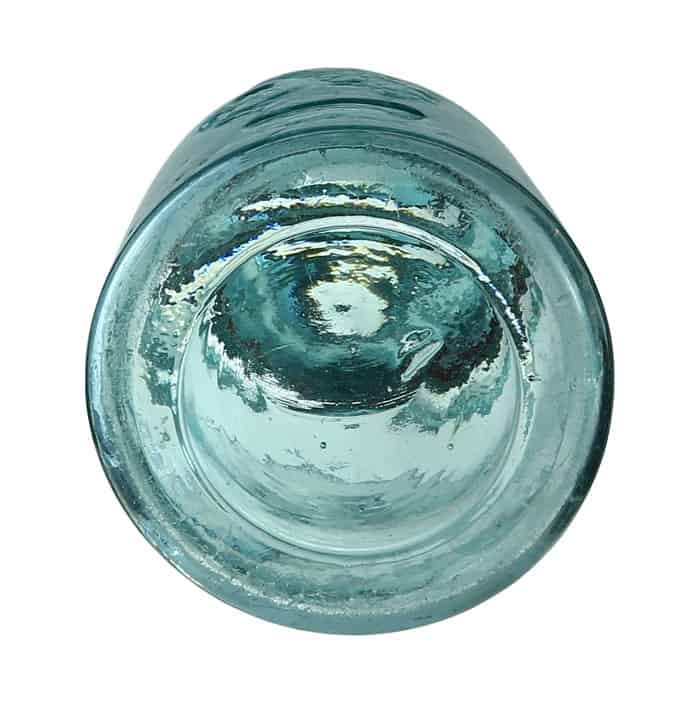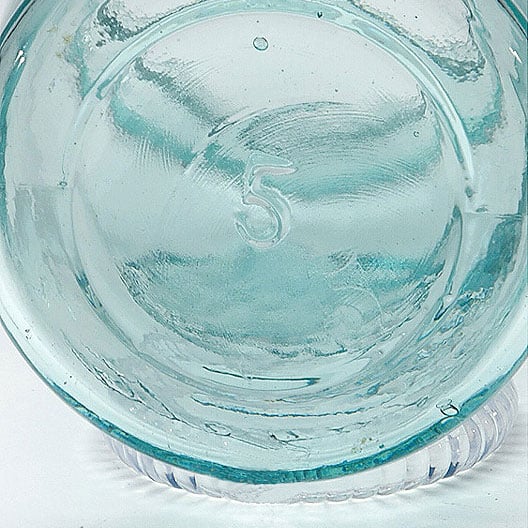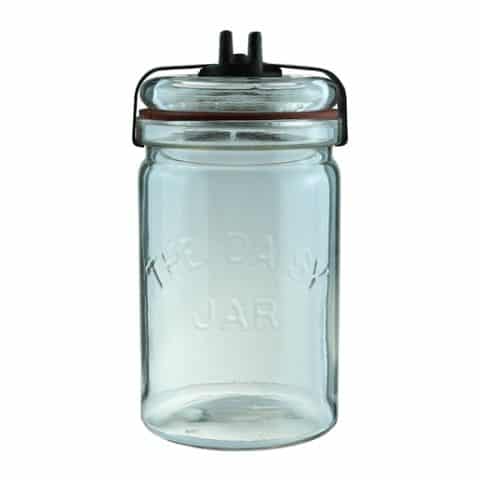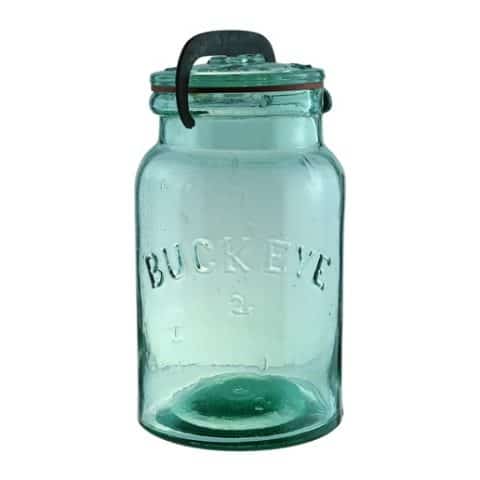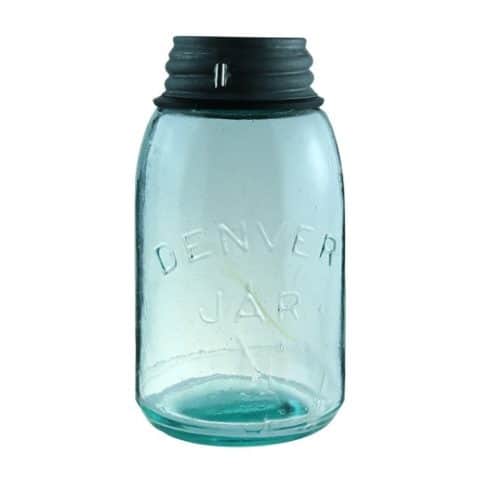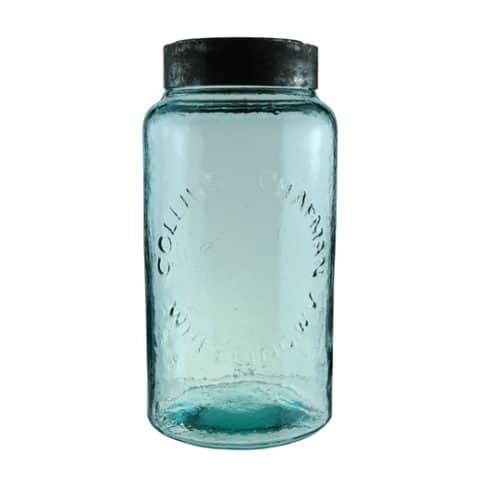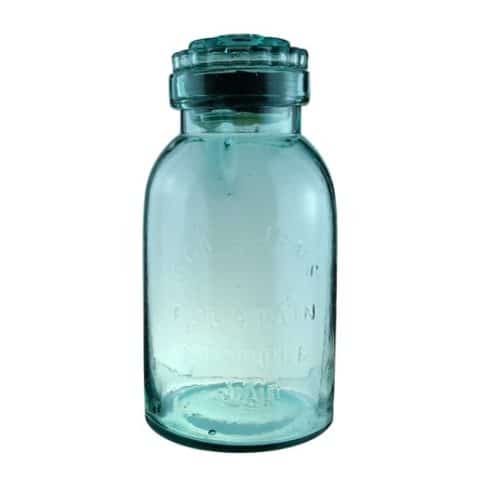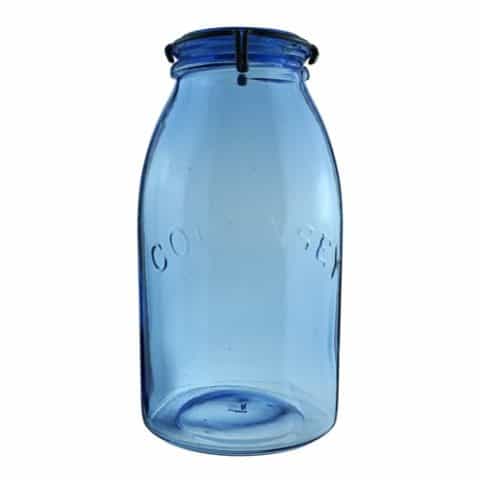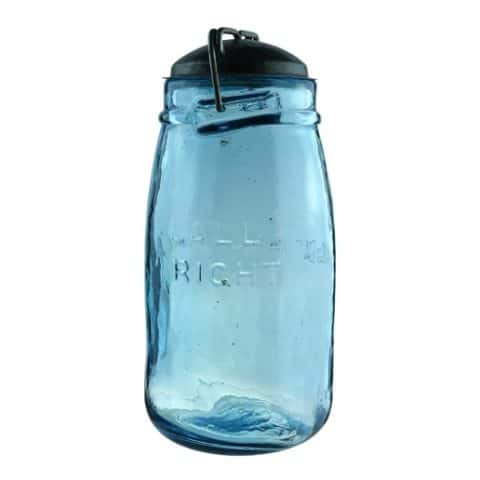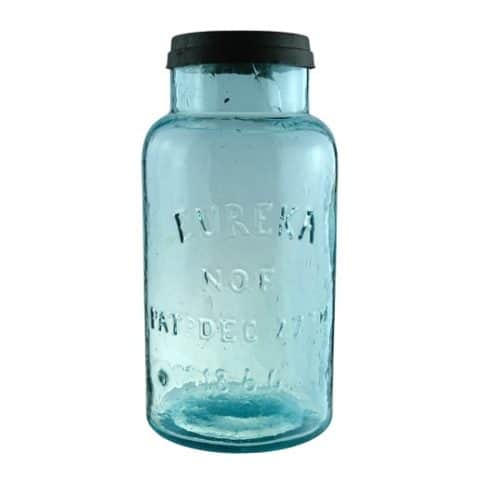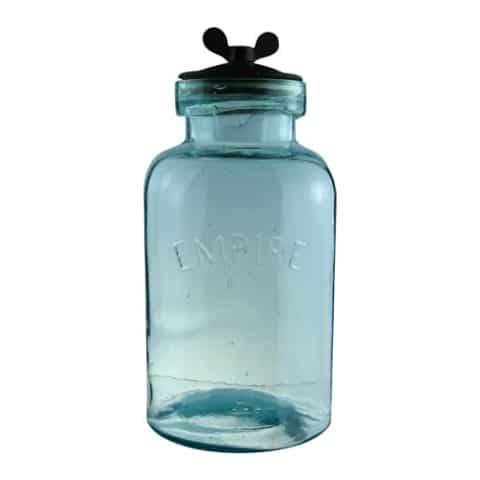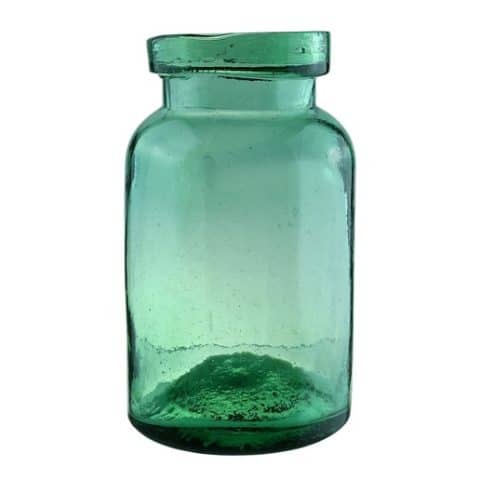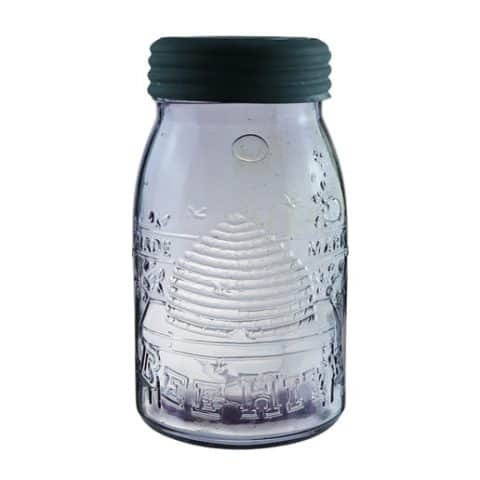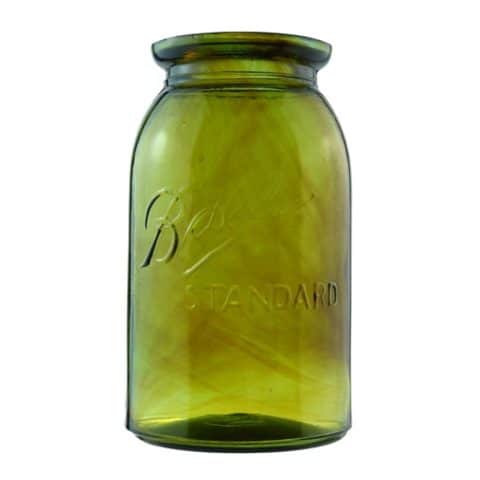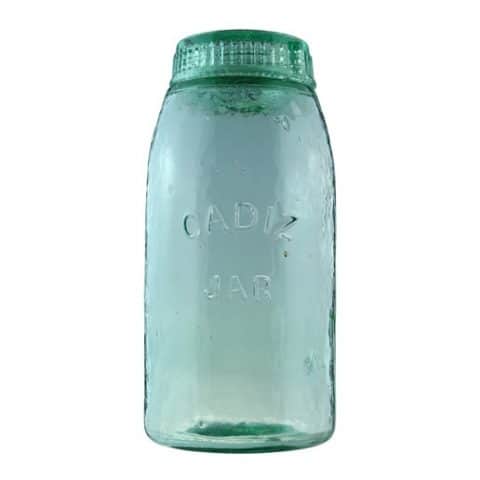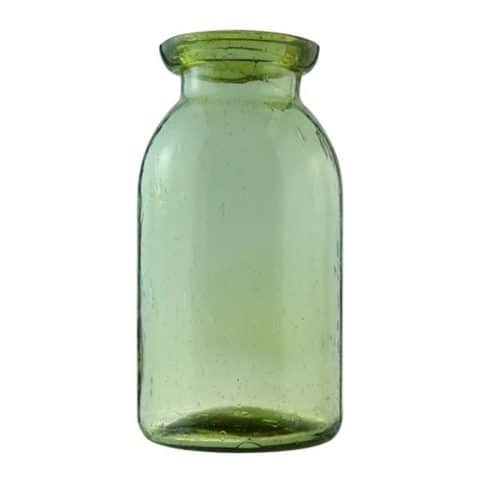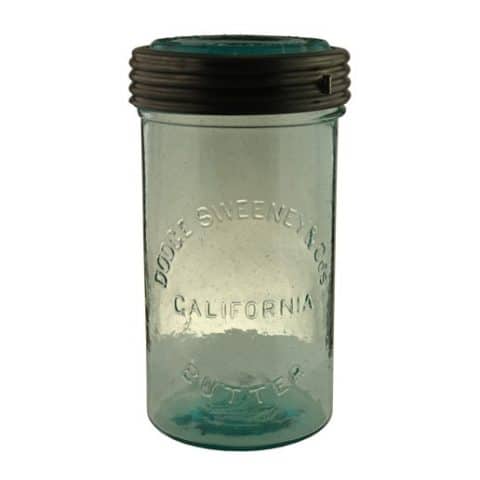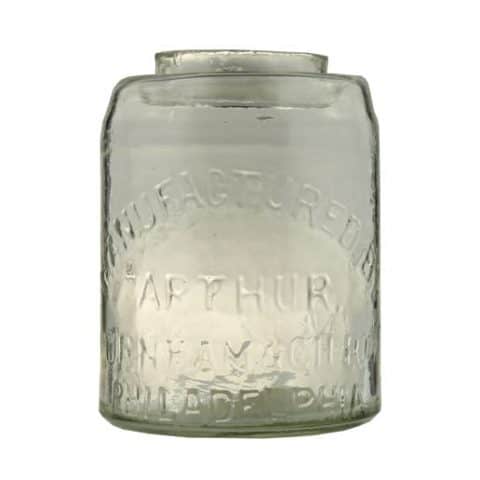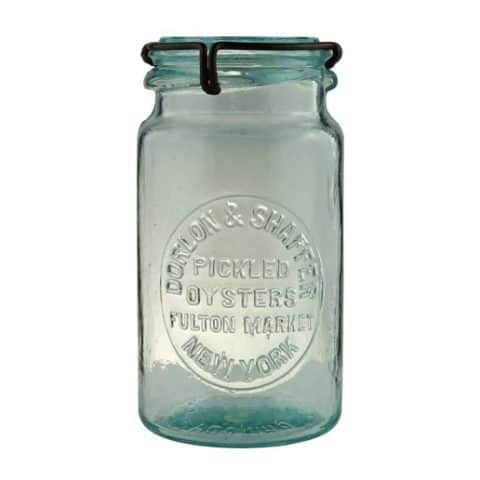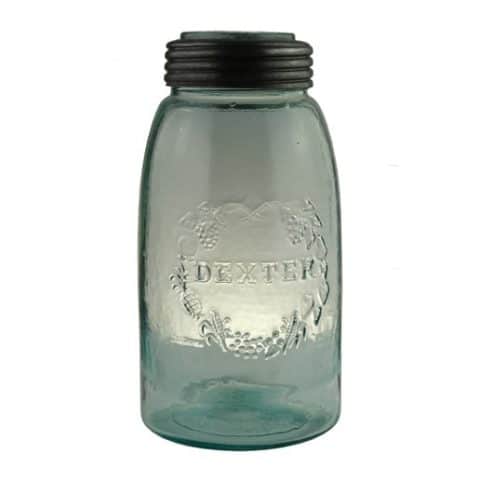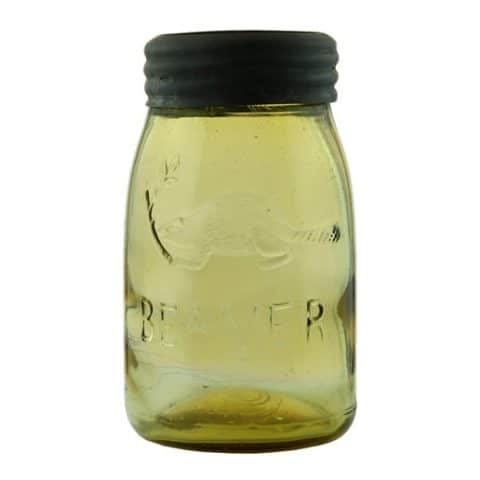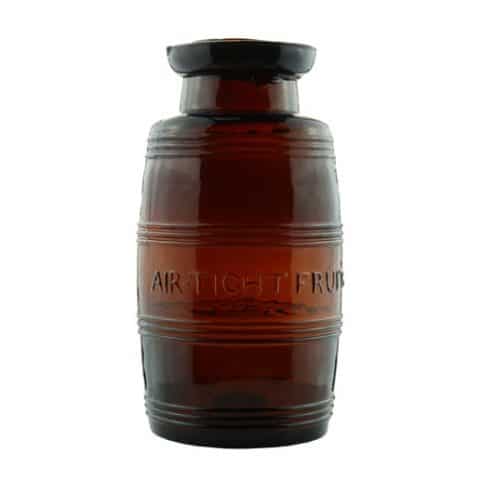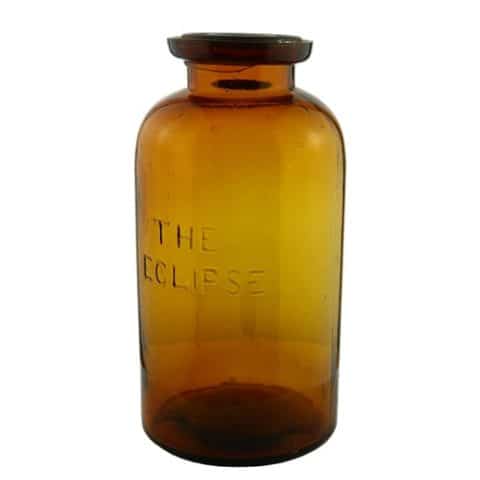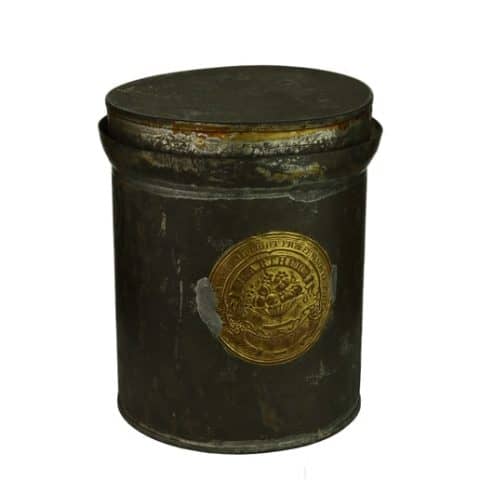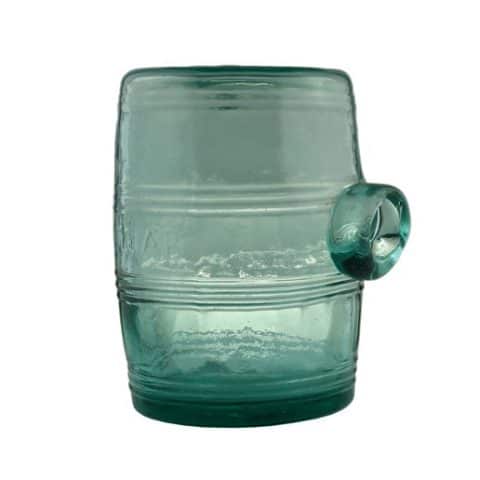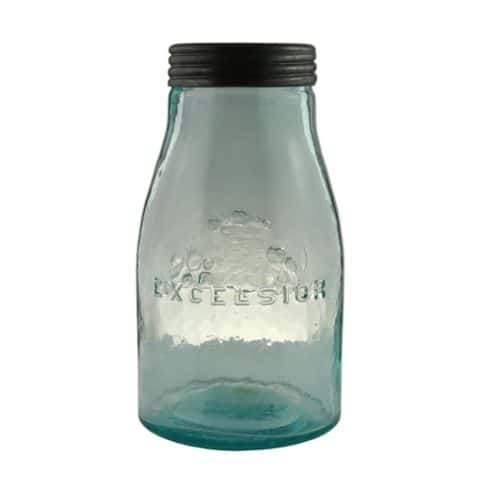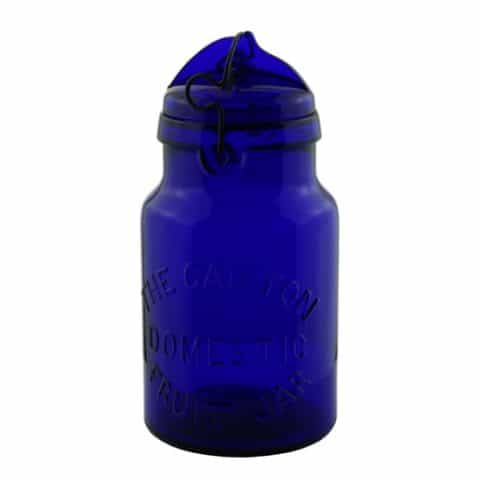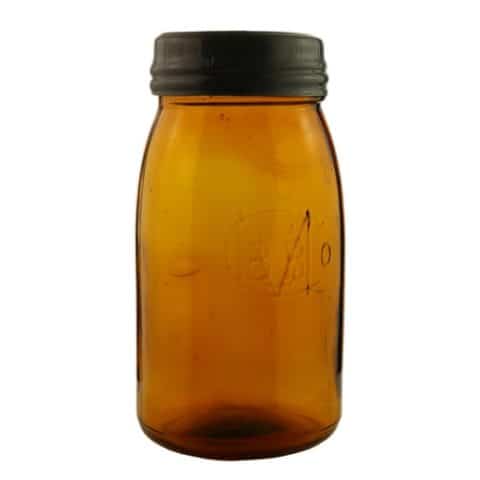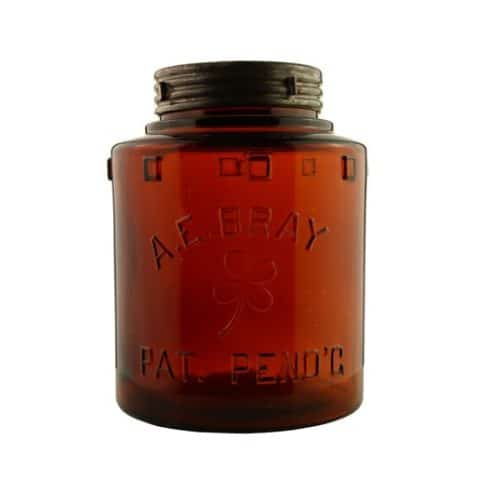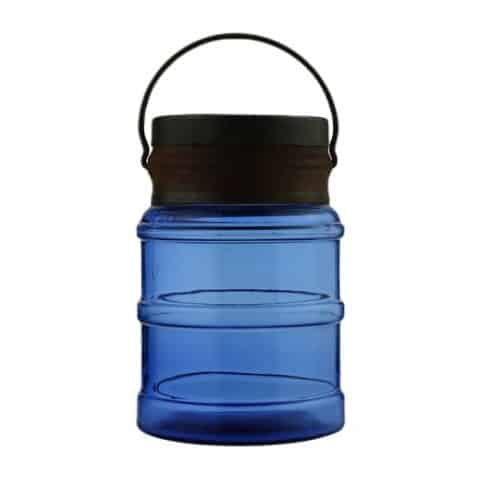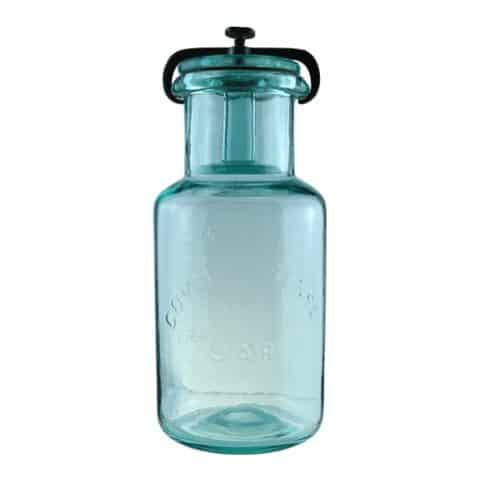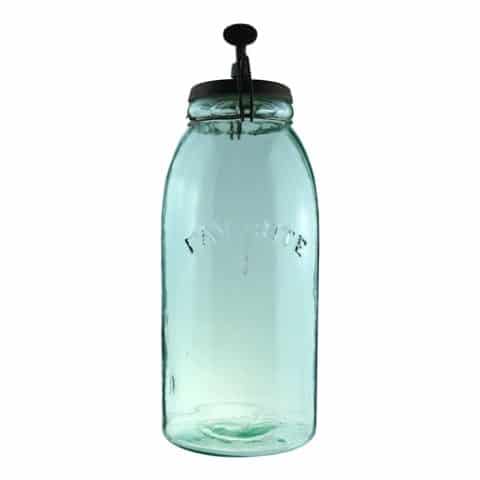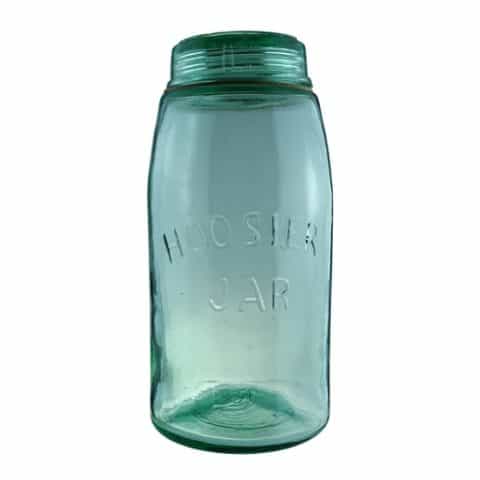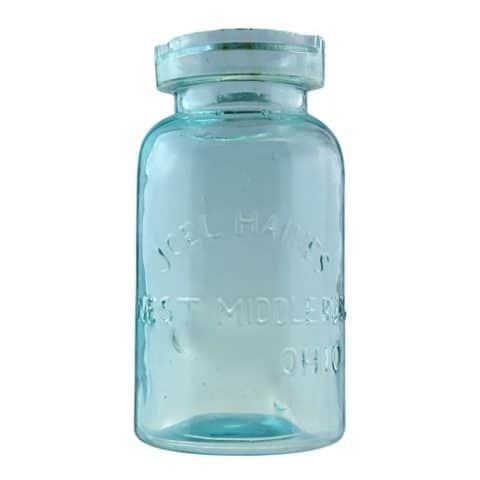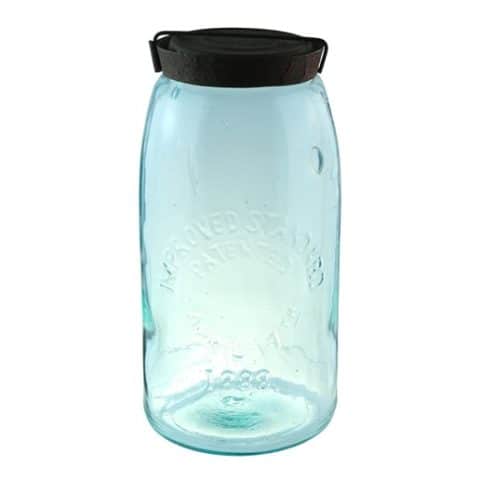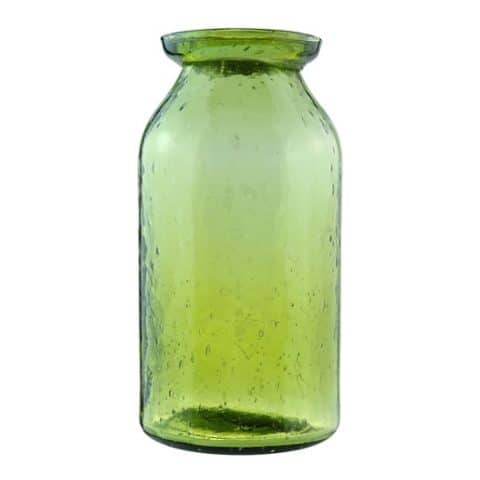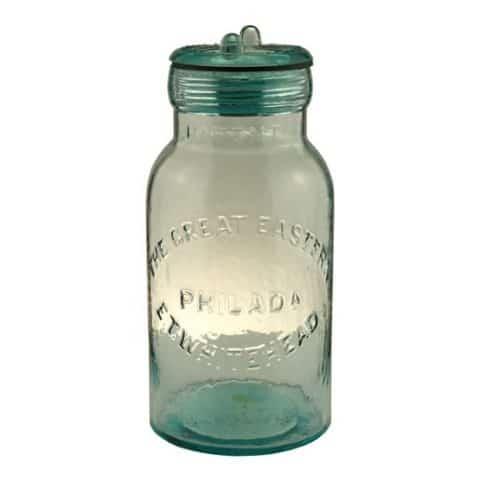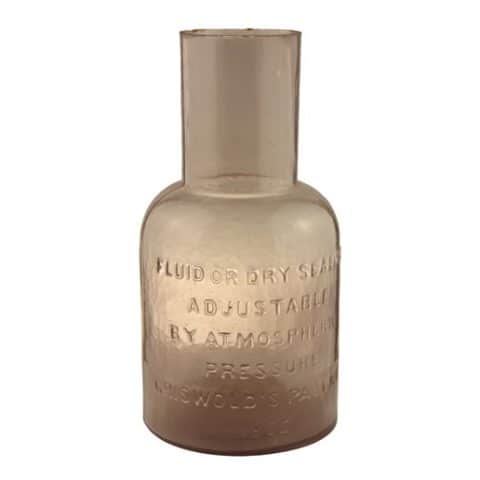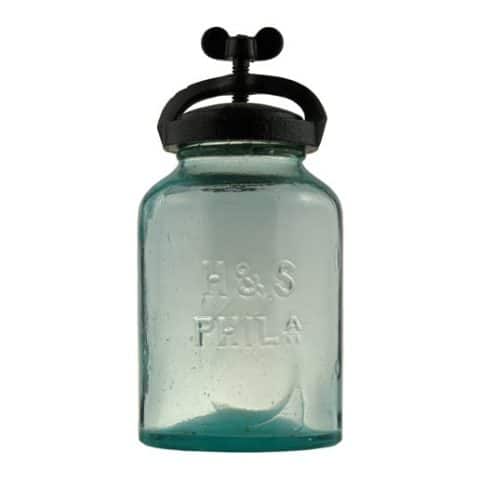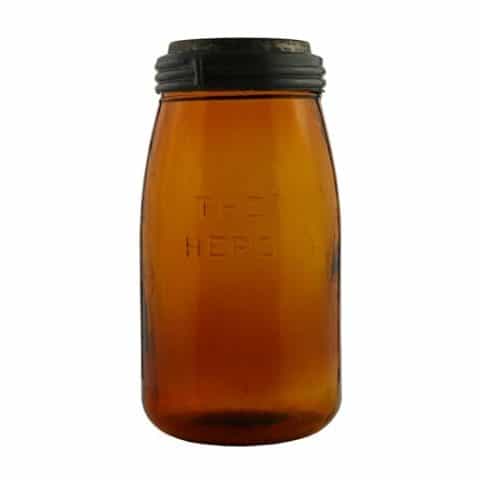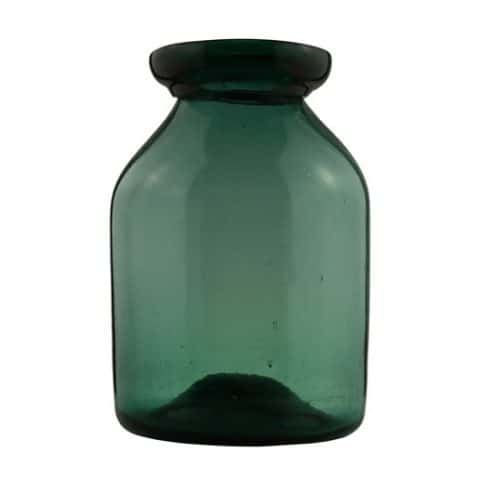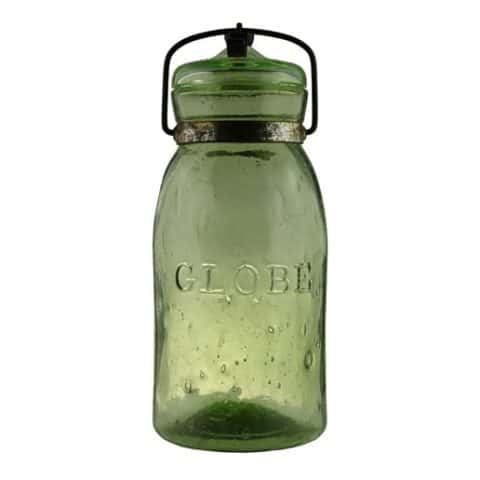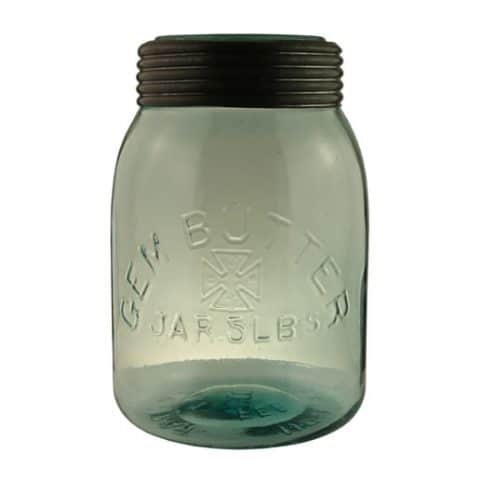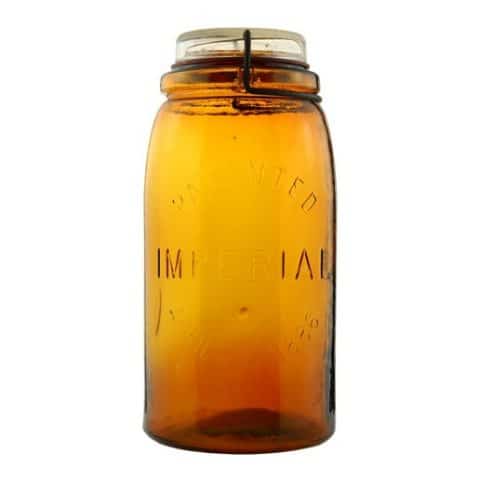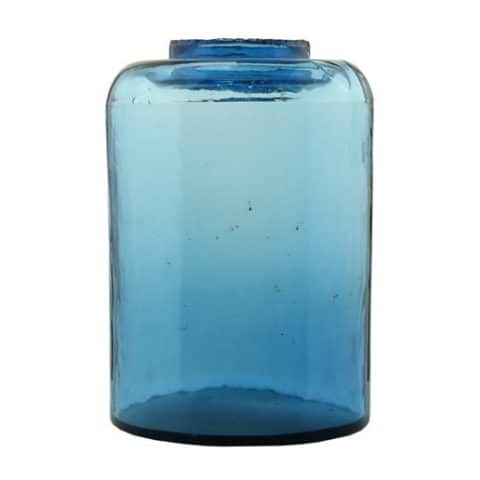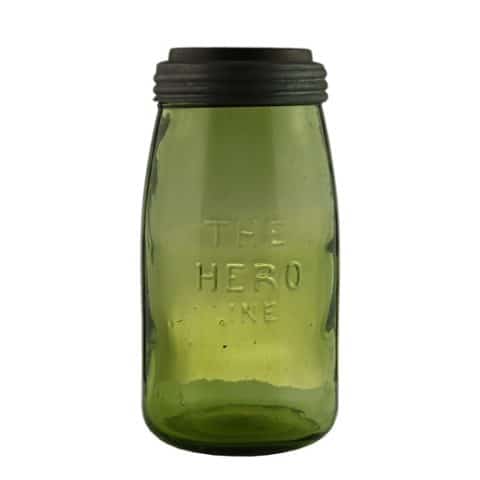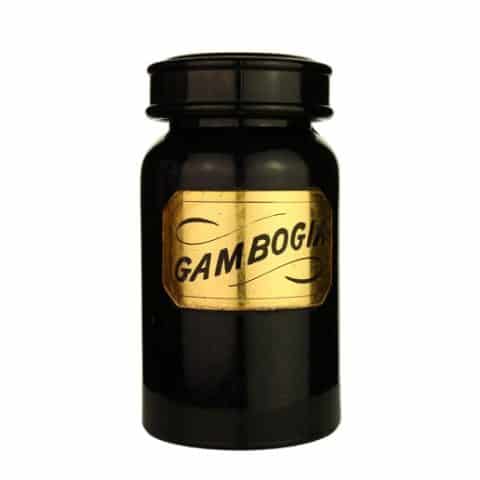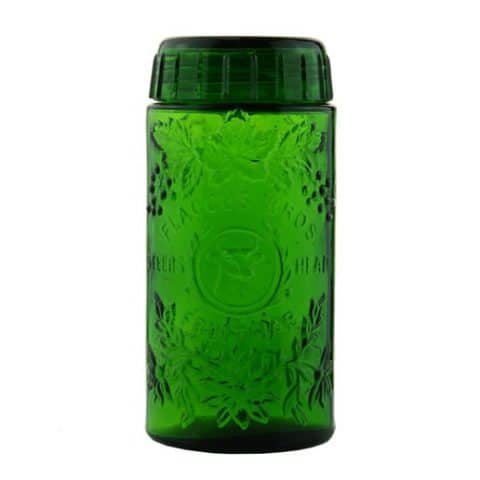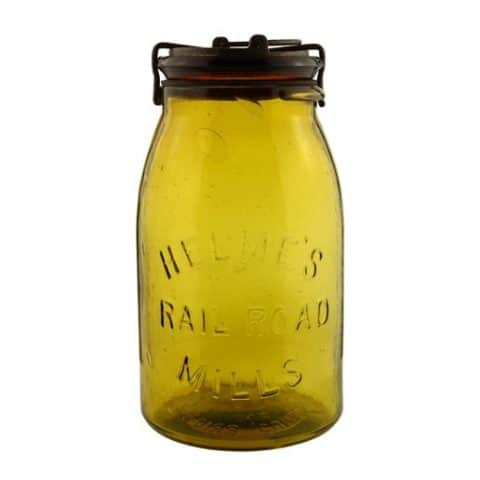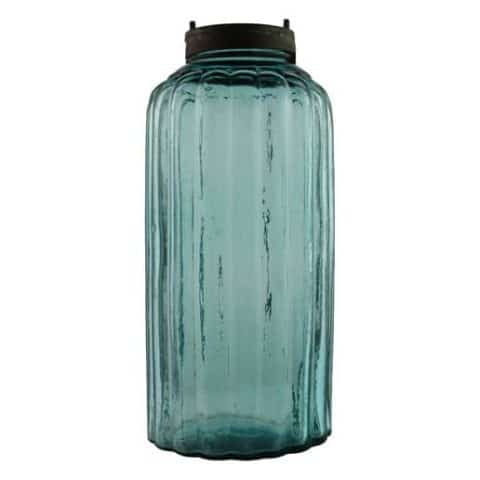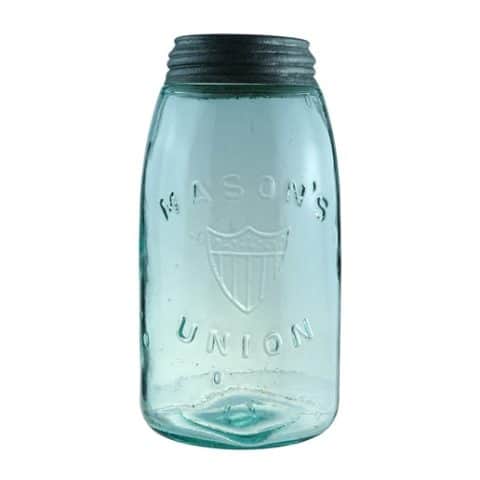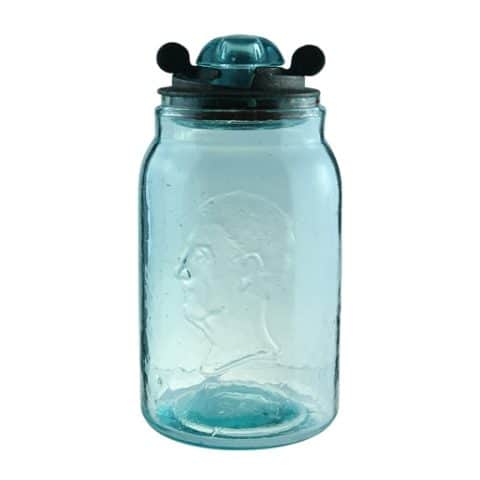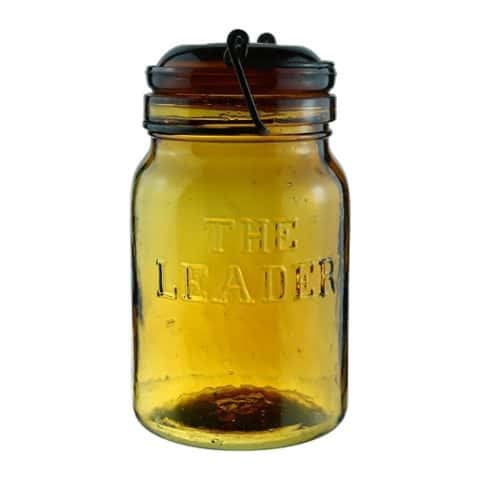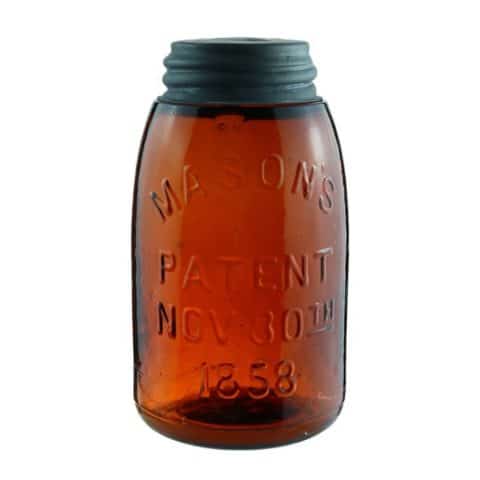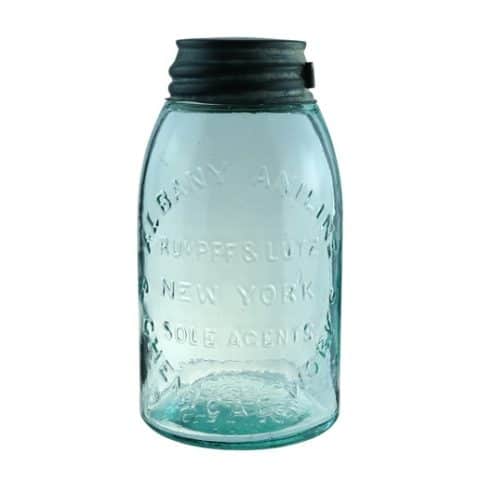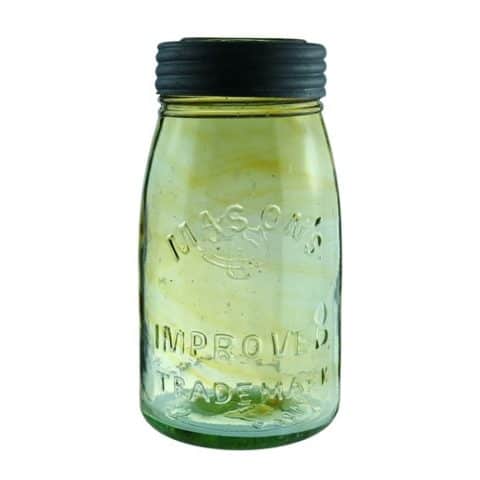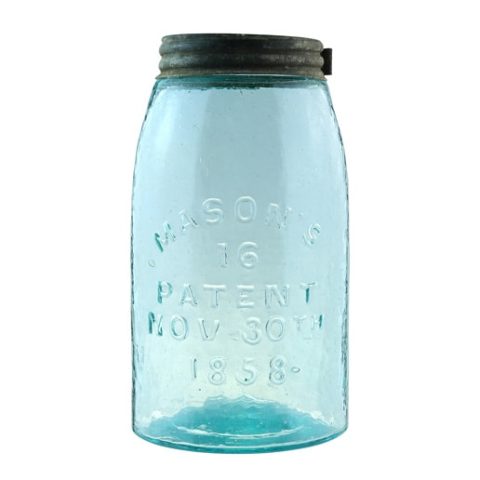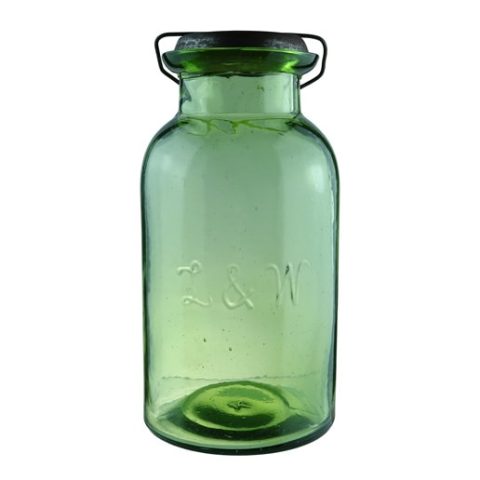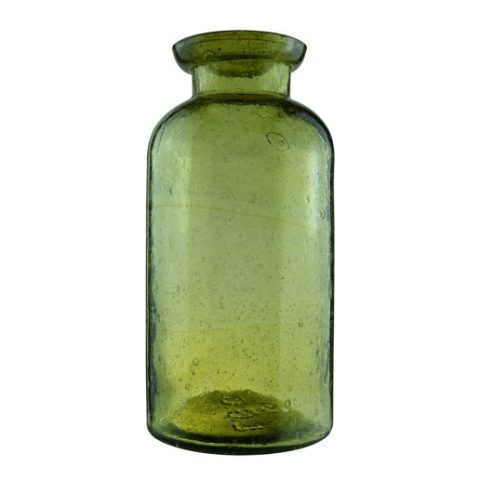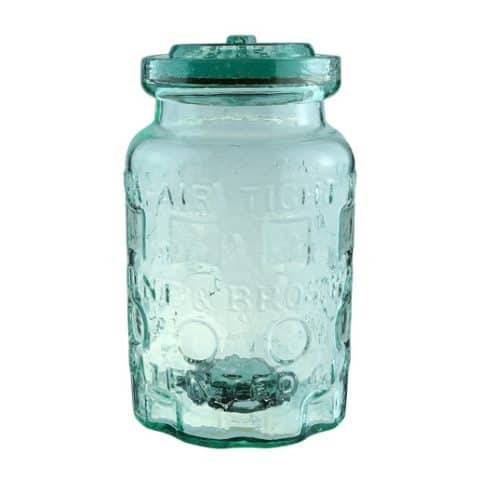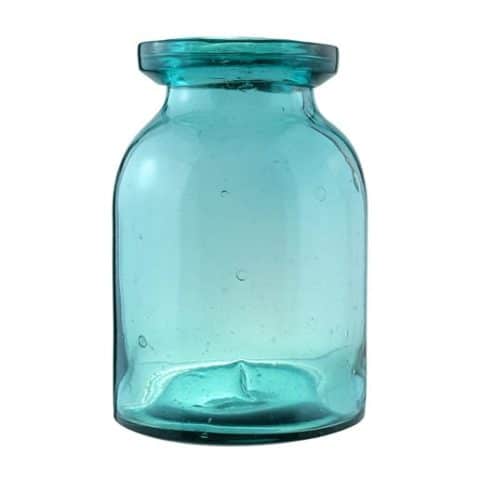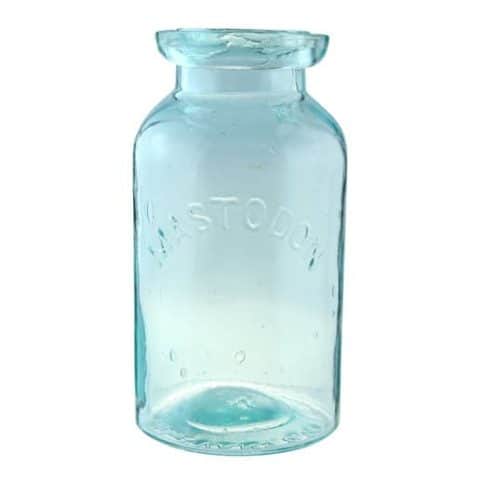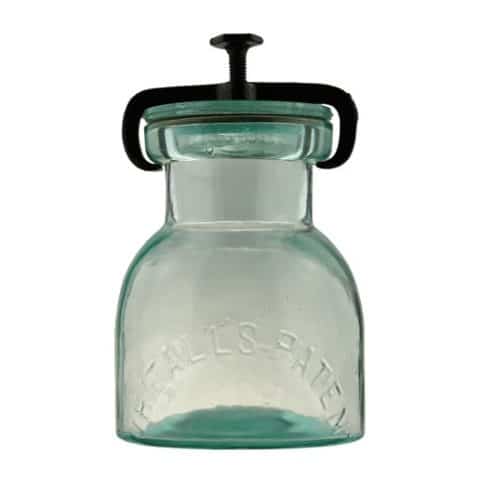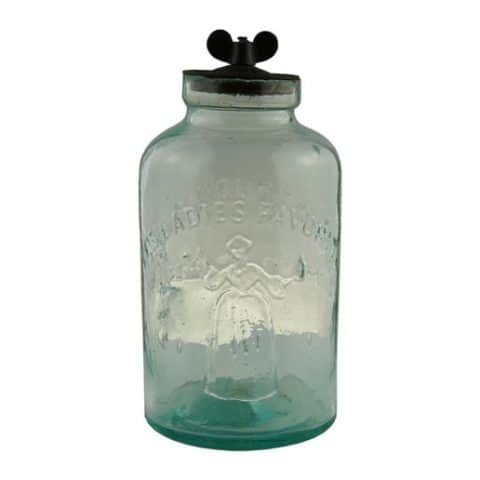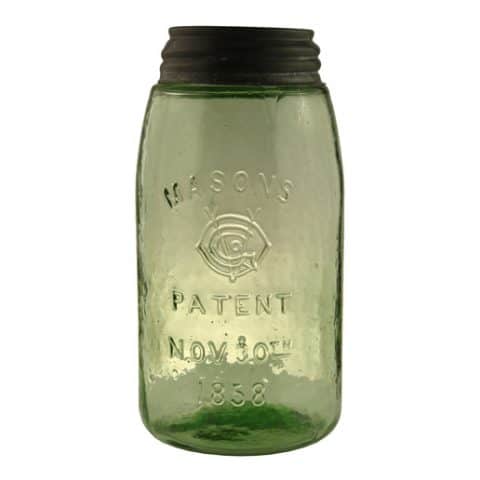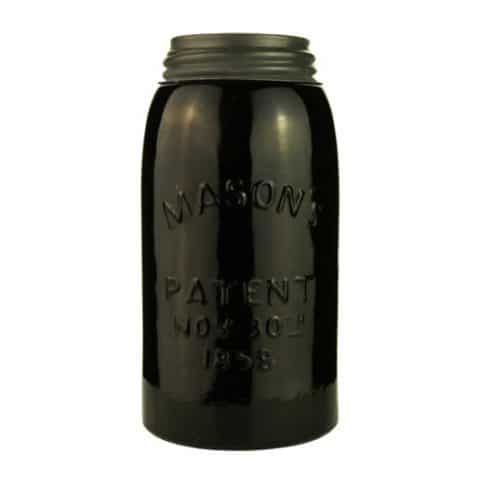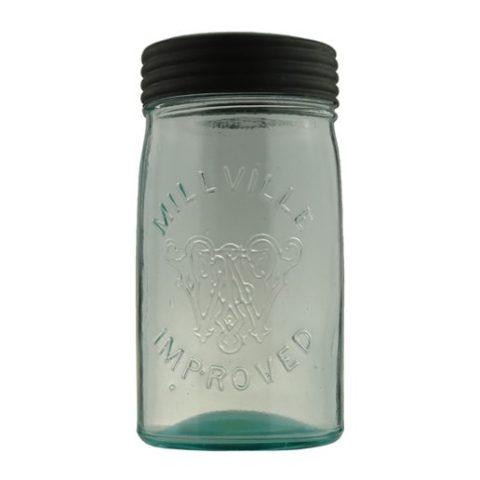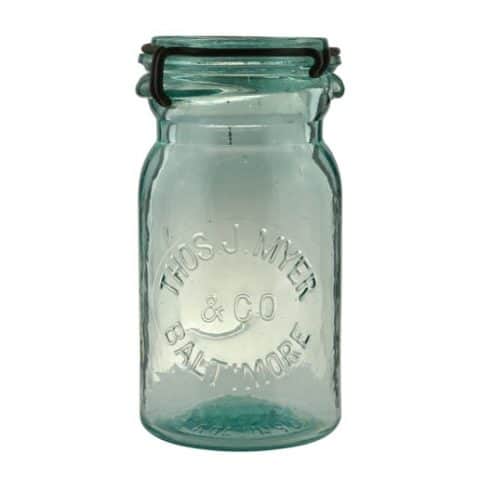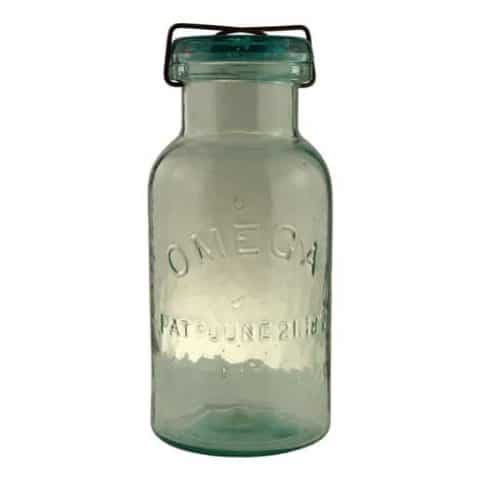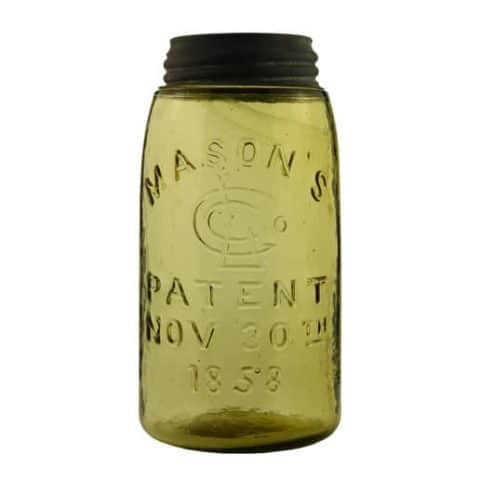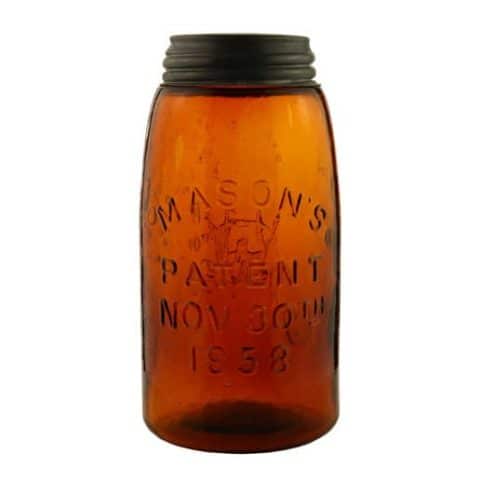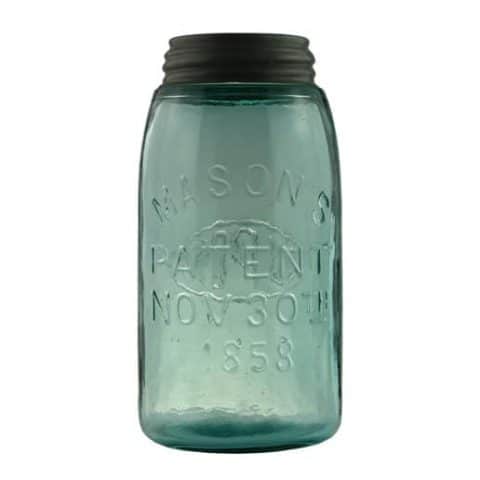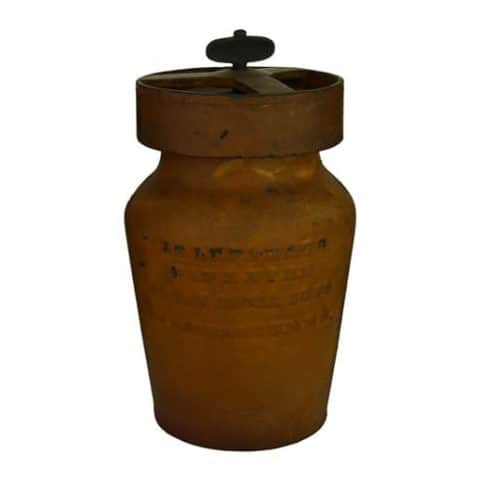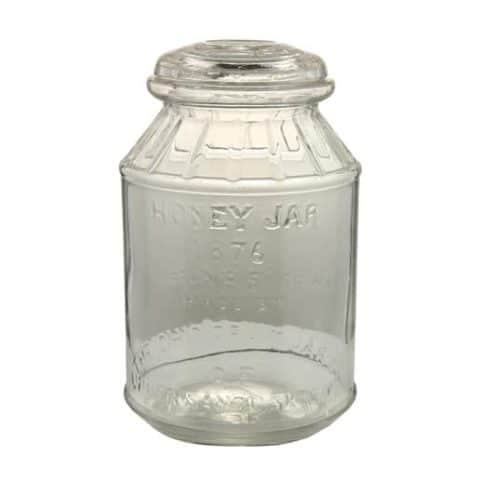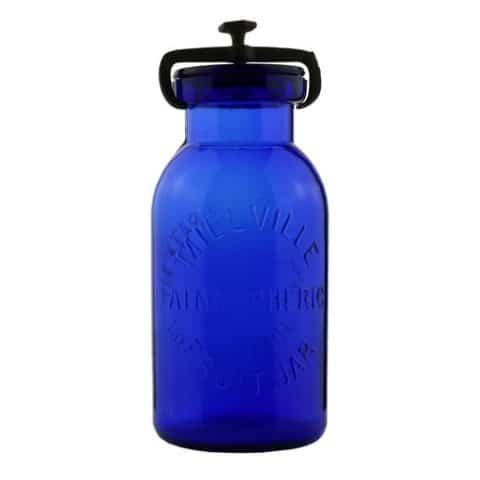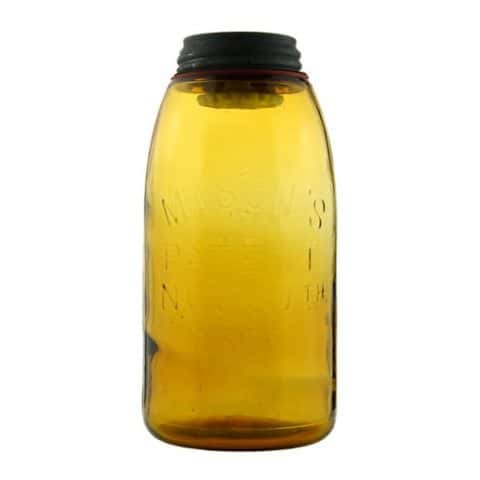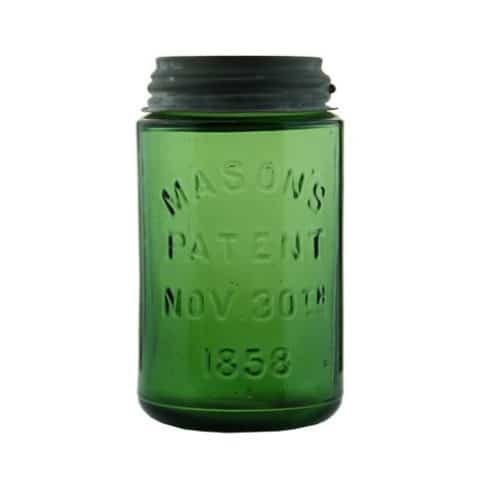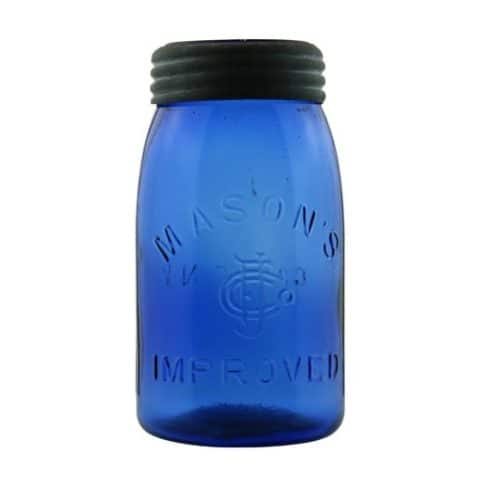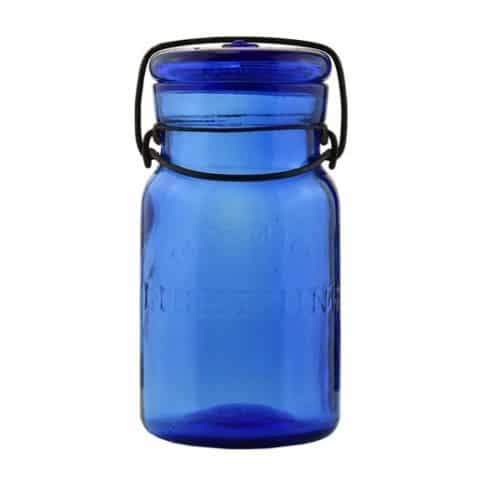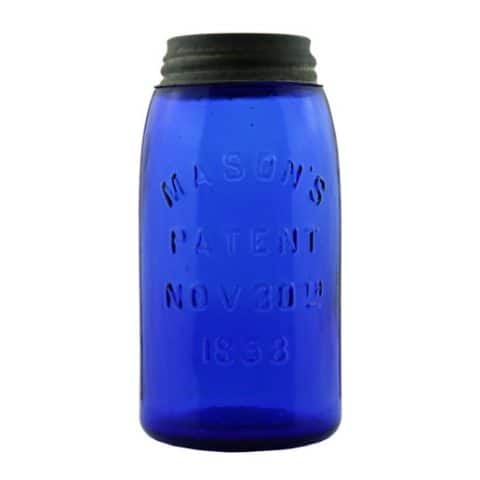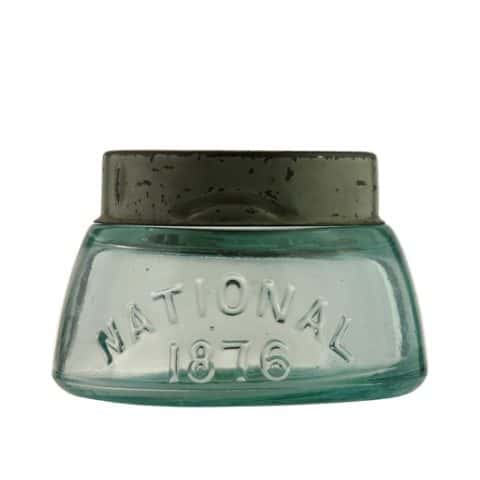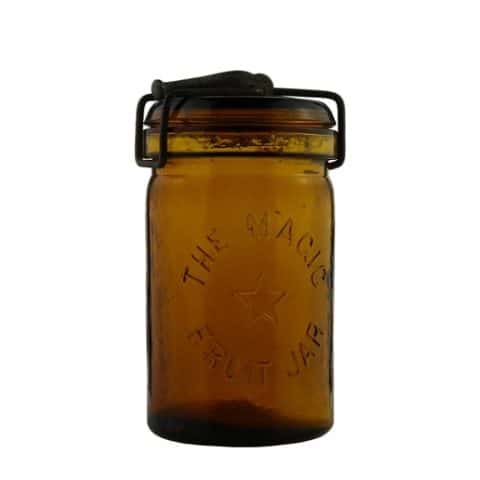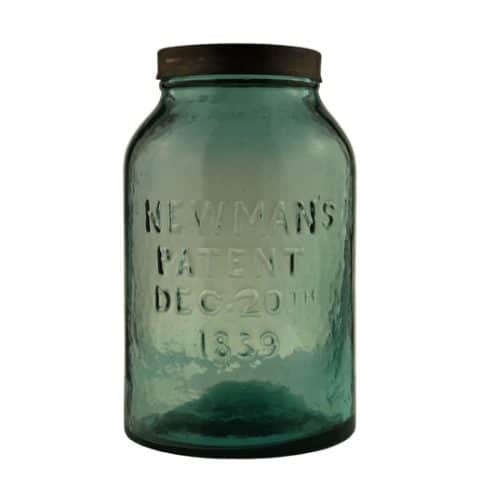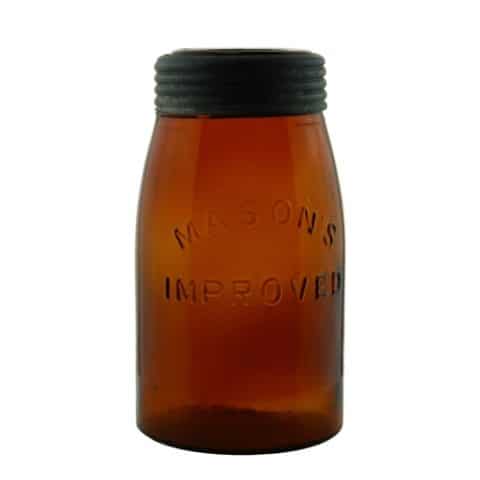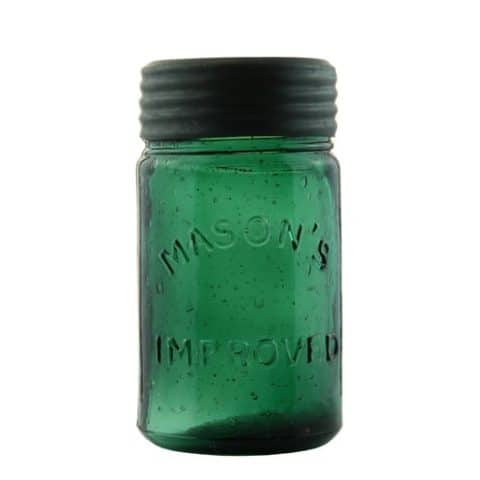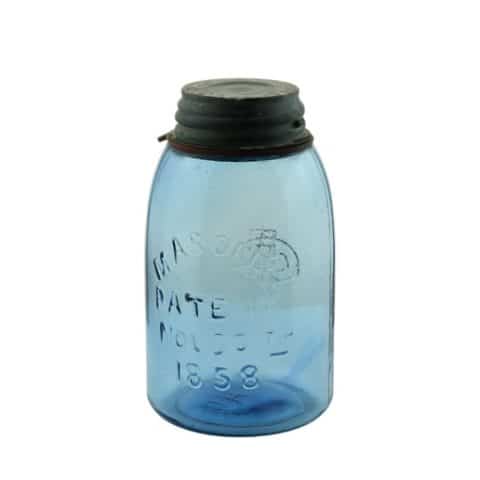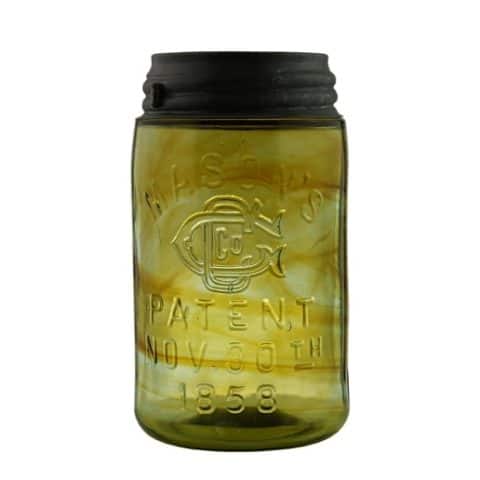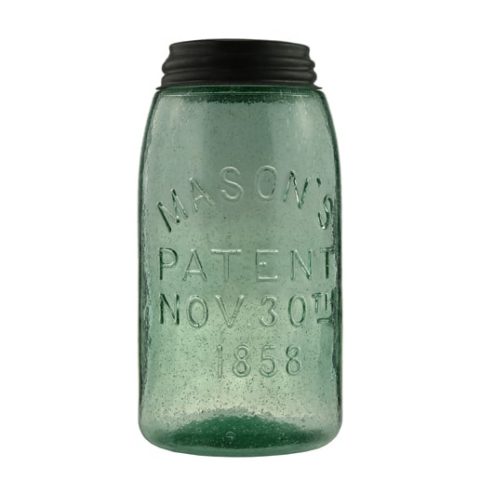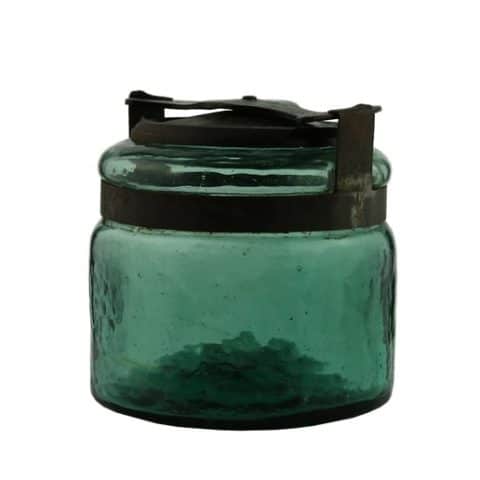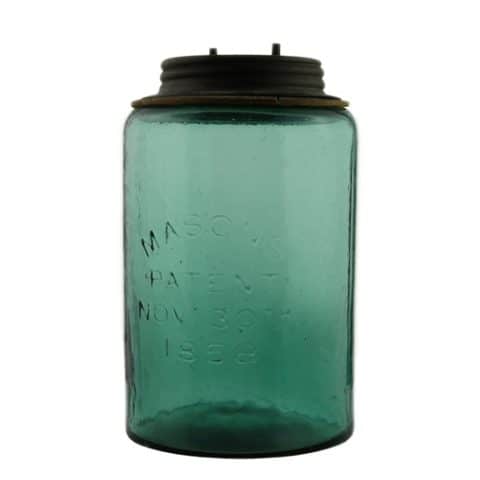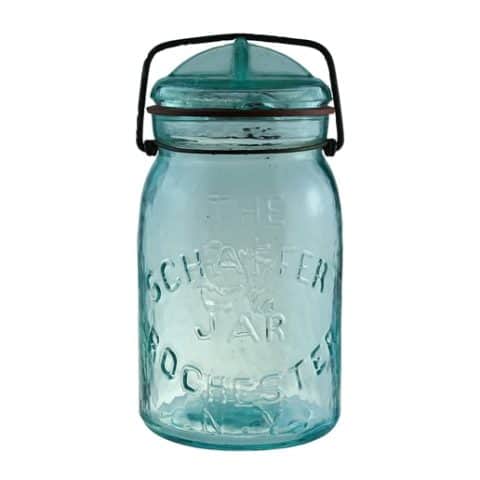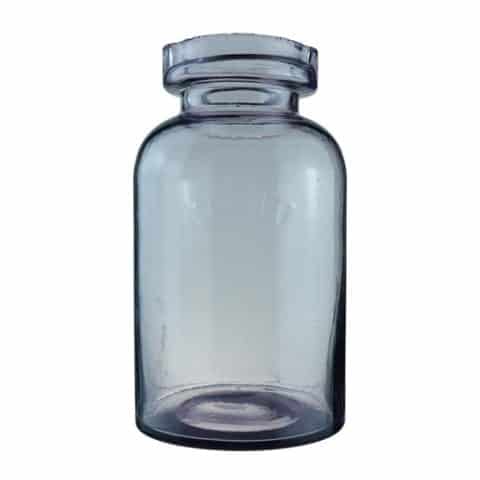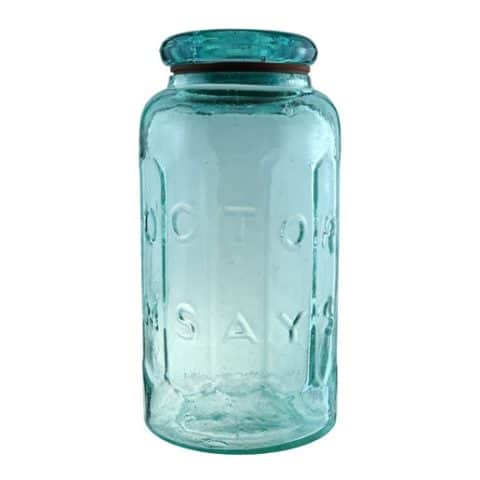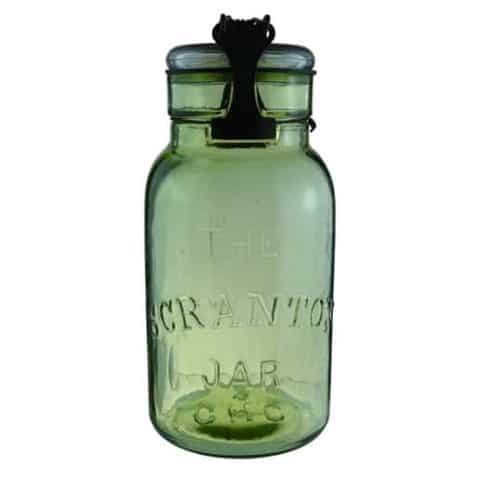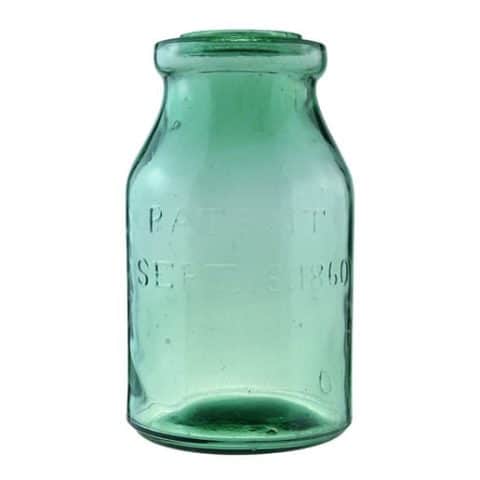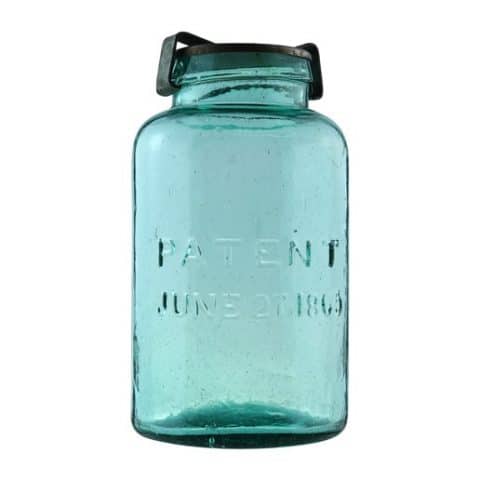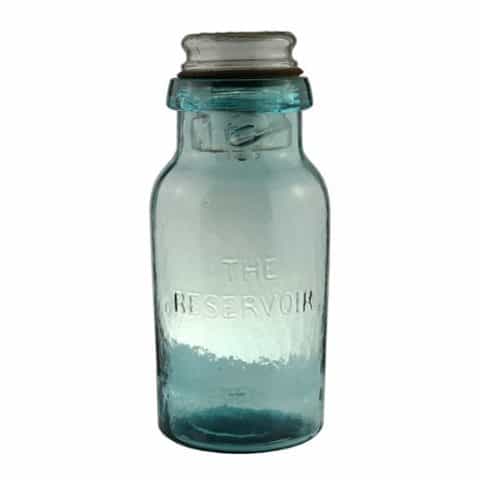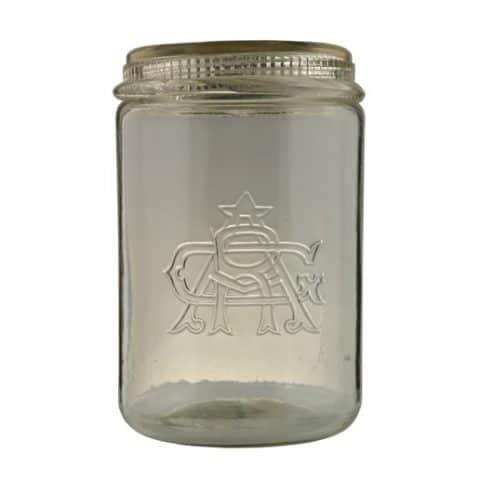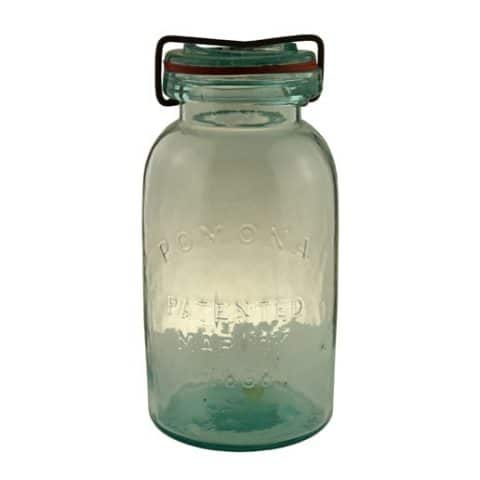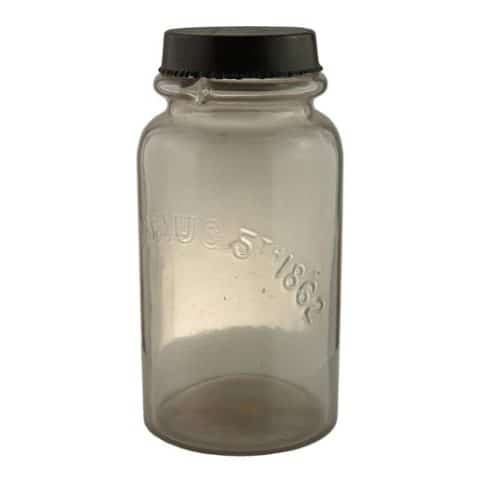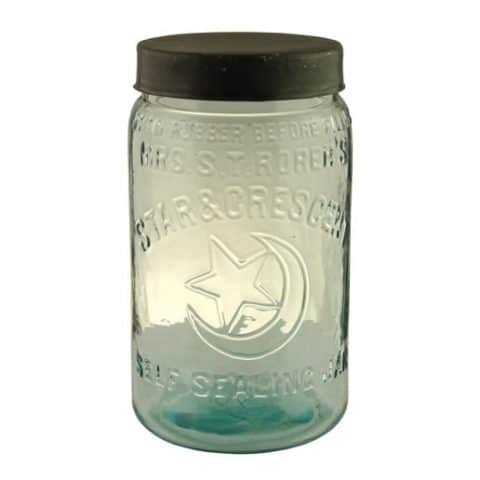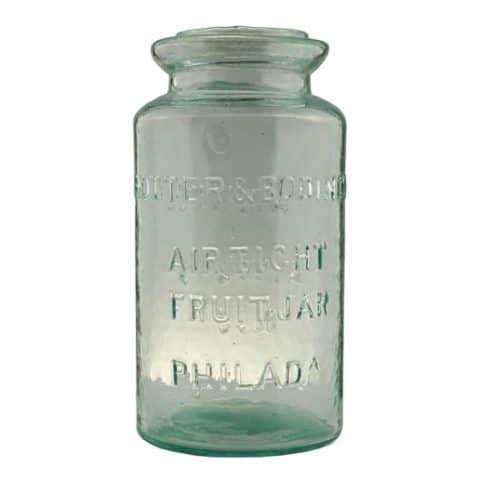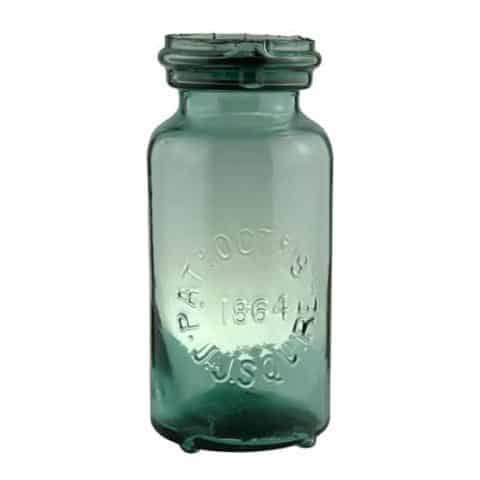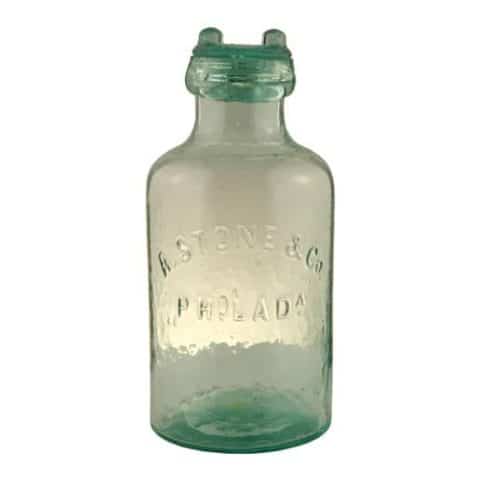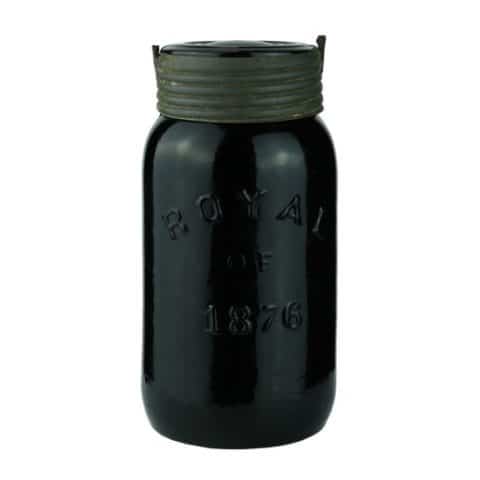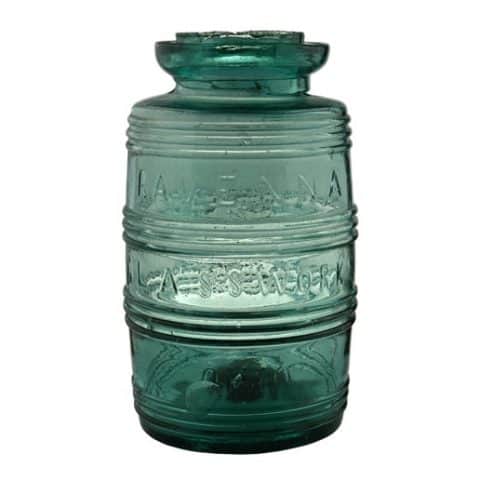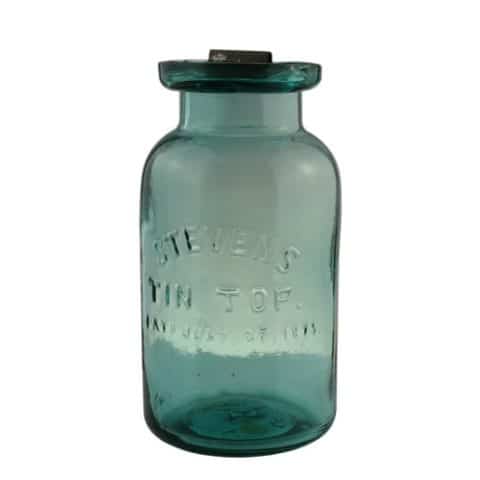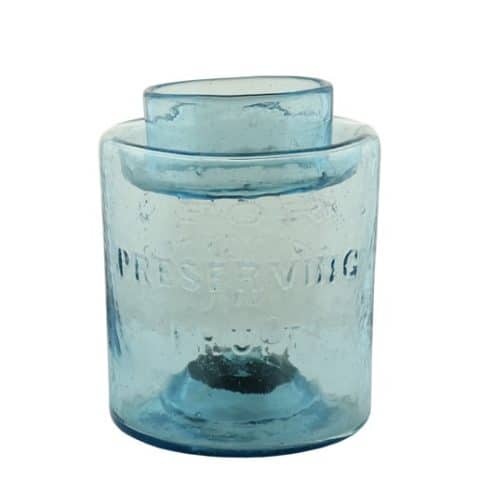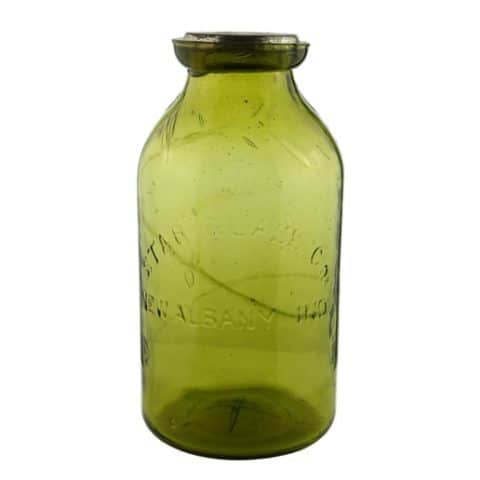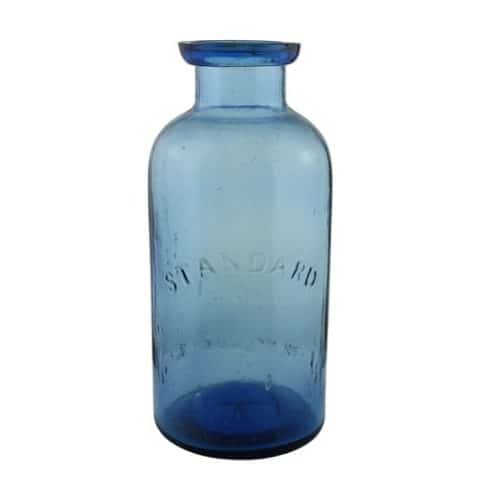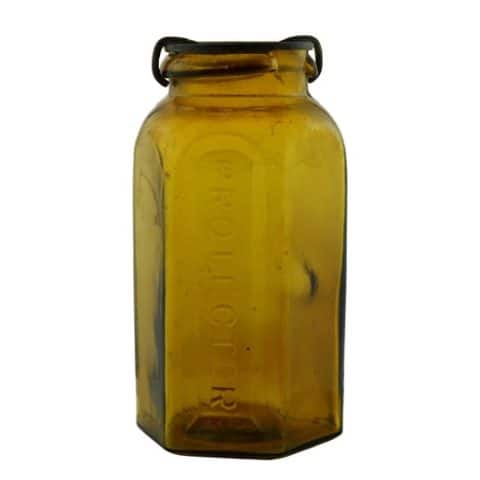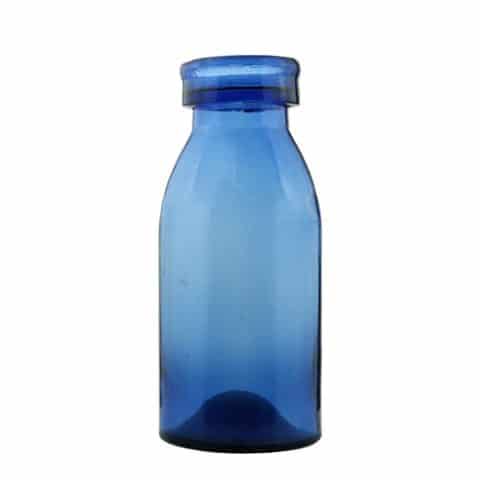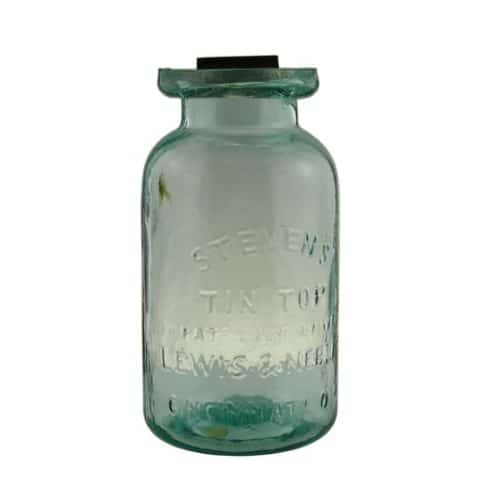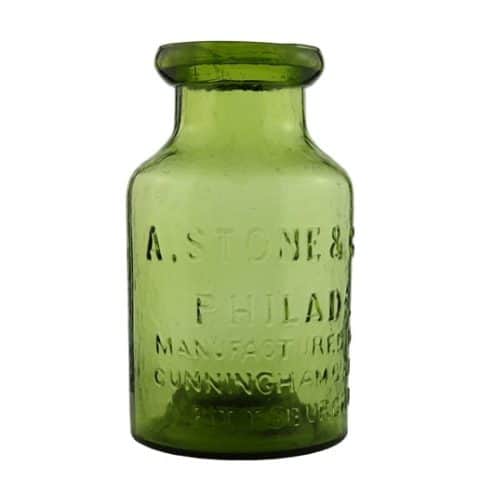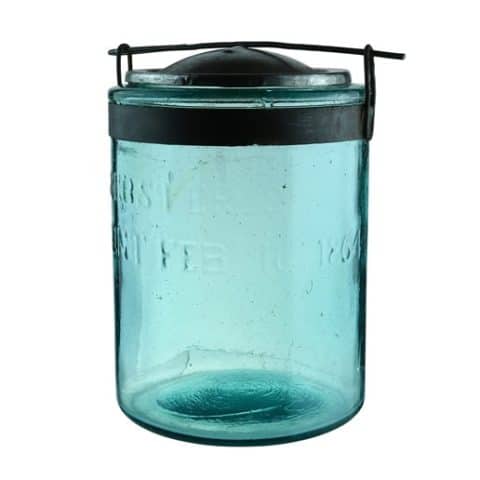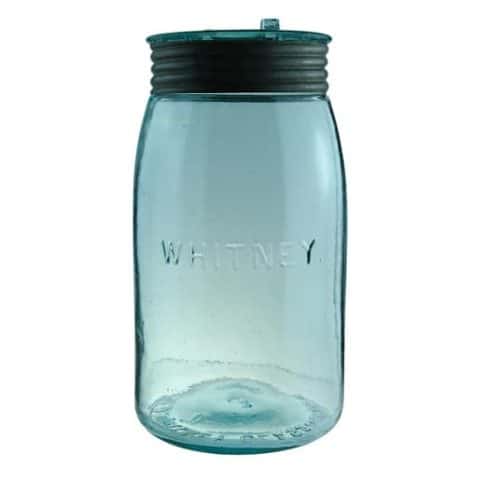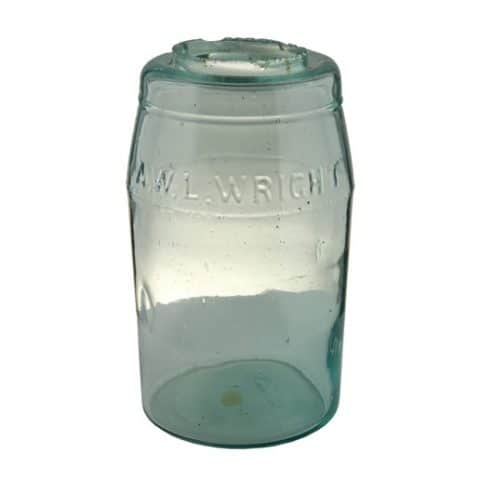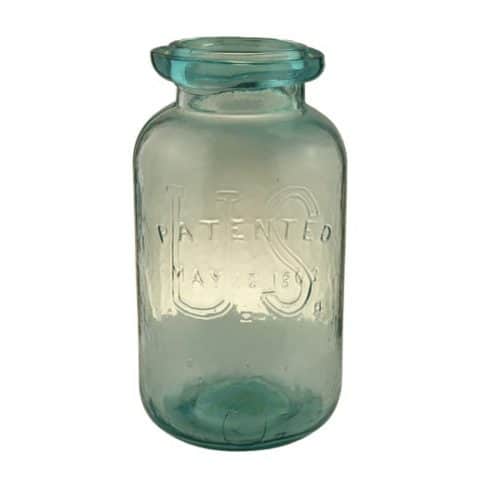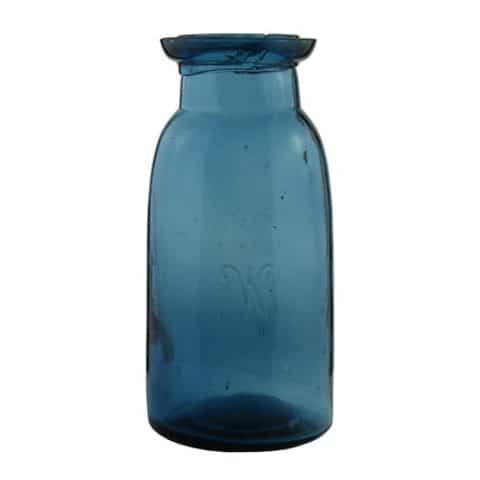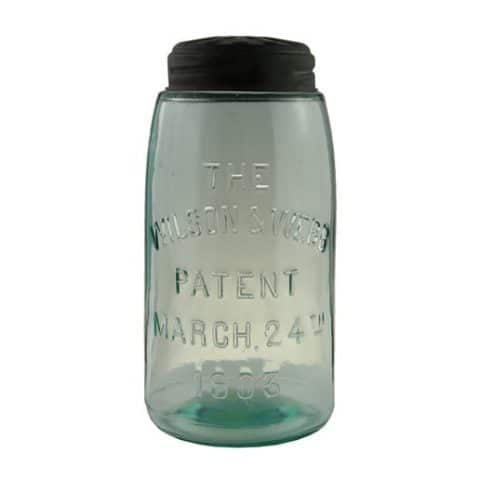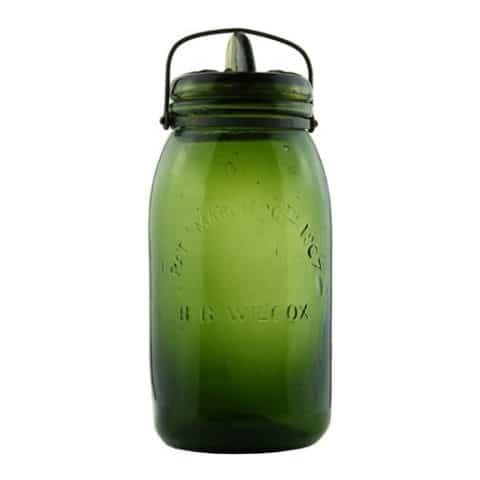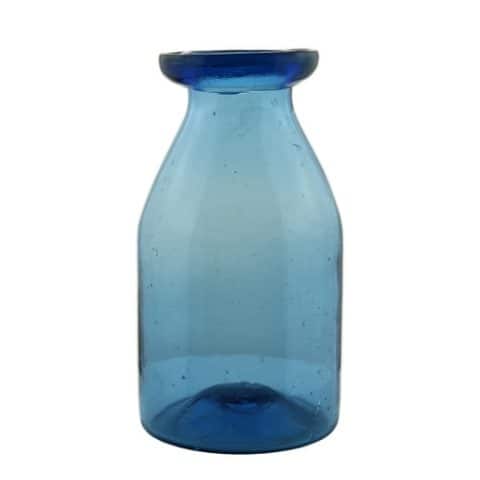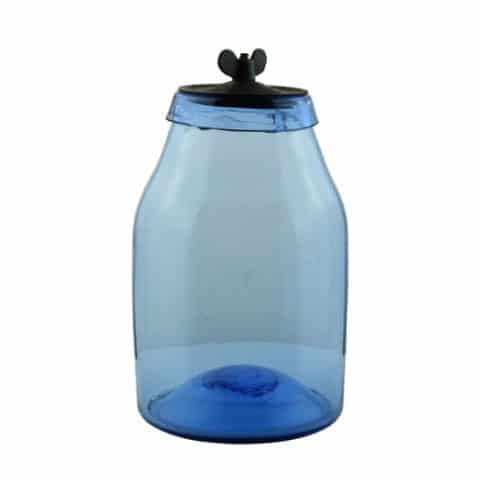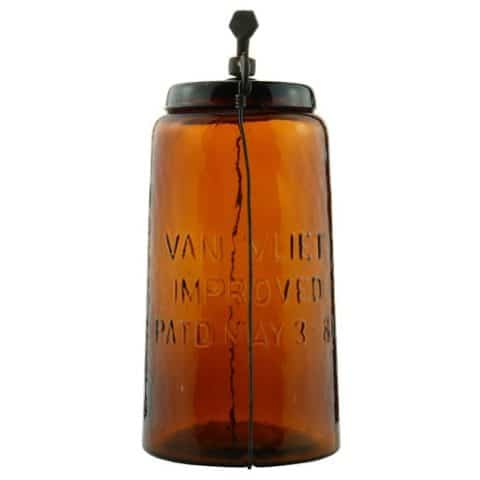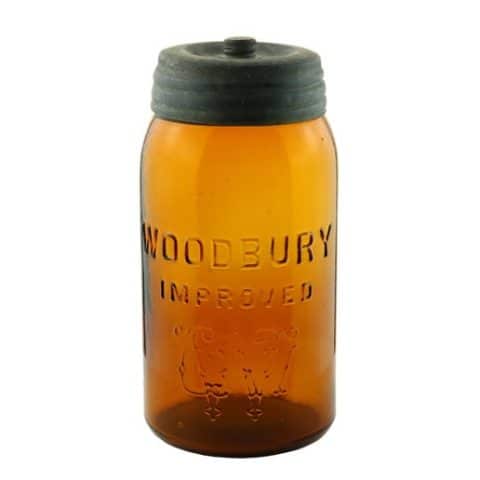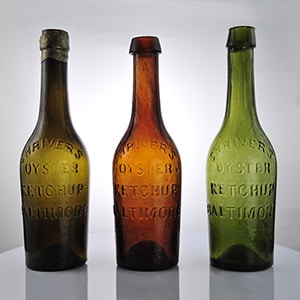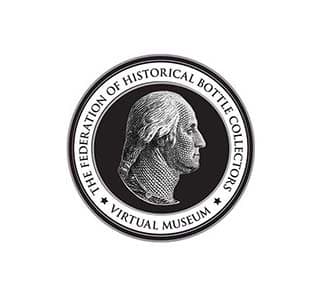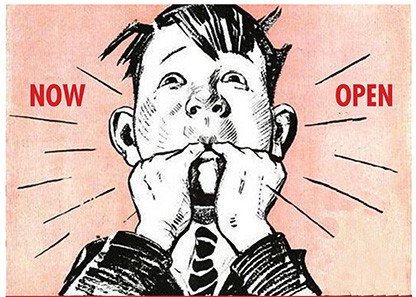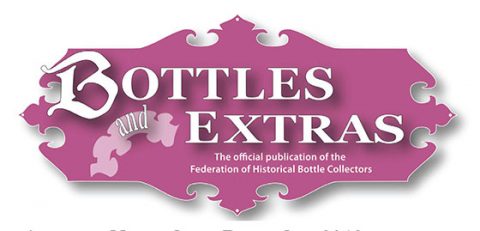LaFayette (Lafayette pictured in profile)
LaFayette
(Lafayette pictured in profile)
Winslow W. Guptil, Boston, Massachusetts
Aquamarine Pint
Provenance: Phil Smith Collection
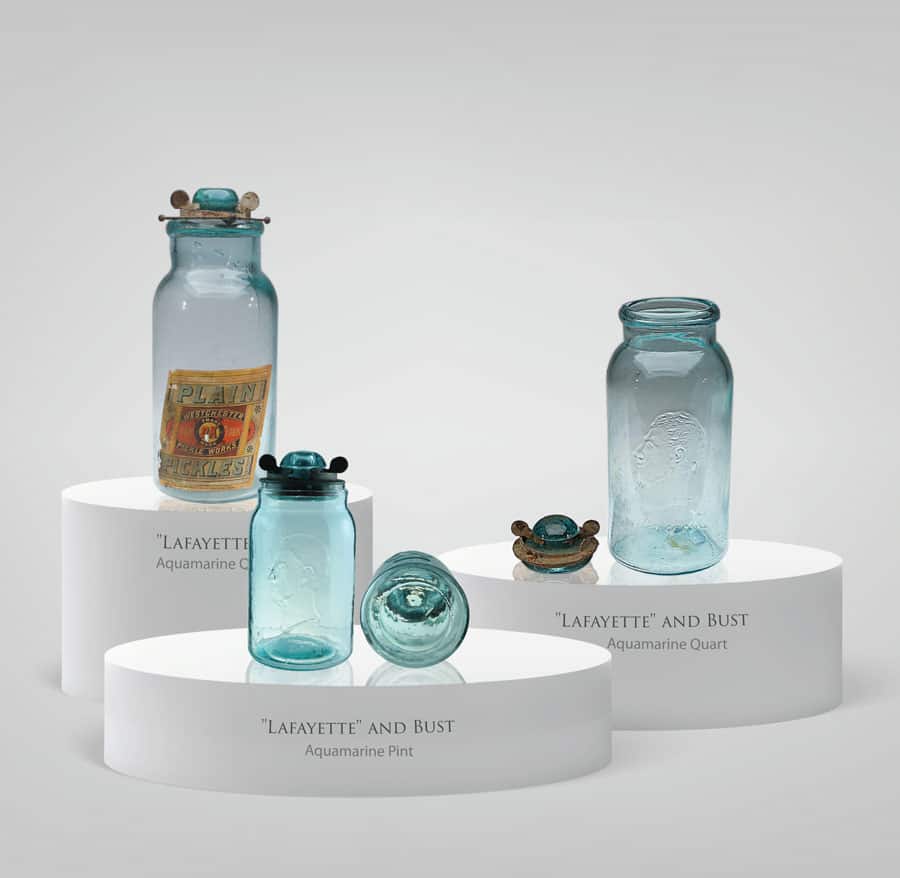
There are at least three primary “appearance” versions of this jar. One is embossed ‘THE LAFAYETTE’ in block letters. The second is embossed ‘Lafayette’ in cursive initial cap underlined letters. The third, like our museum’s primary example, is embossed ‘Lafayette’ in cursive initial cap letters that are beneath an embossed pictorial profile bust. The jar dates from 1883 to 1884.
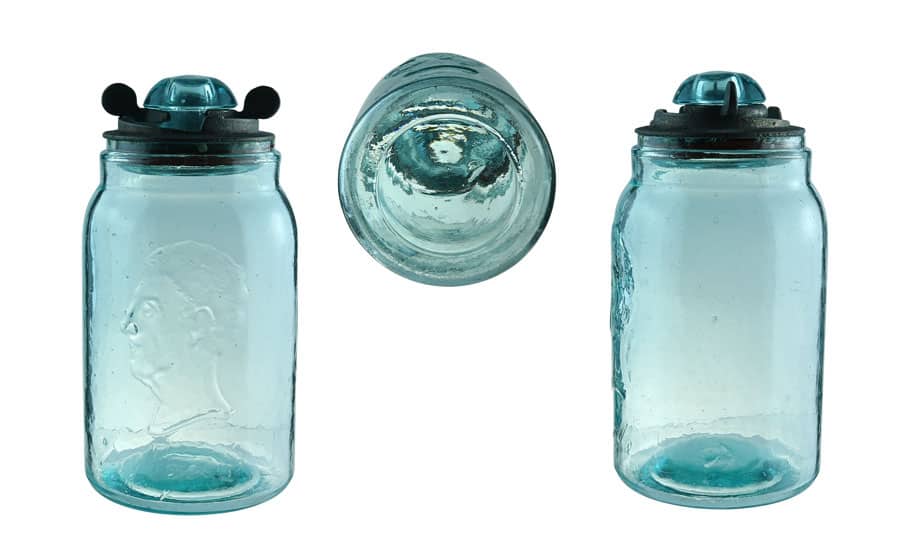
Our very rare aquamarine pint jar is embossed ‘Lafayette’ in cursive initial cap letters located at the base of the jar. The copy is not underlined as it occurs on half-gallon and quart jars. Above the letters is a profile bust, facing left, of most likely Gilbert du Motier, Marquis de Lafayette, or “Lafayette” as he was known in the United States. Lafayette was a French aristocrat, freemason and military officer who fought in the American Revolutionary War, commanding American troops in several battles, including the siege of Yorktown. After returning to France, he was a key figure in the French Revolution of 1789 and the July Revolution of 1830. He is considered a national hero in both countries.
See the museum example of GI-80 “Lafayette” and Bust – “De Witt Clinton” and Bust Portrait Flask.
The earliest versions of the Lafayette jar have a mouth finish that is ground off. Later versions, which are the vast majority of these jars, have a smooth tooled finish. It is possible that this change was made to strengthen and protect the mouth from breakage. The pint jar typically has a three-piece glass and metal stopper with a gasket compressed by a two-piece cast iron cam lever clamp. The glass portion is embossed underside ‘PATENT PENDING.’ The stopper is also found unmarked. The base is smooth.
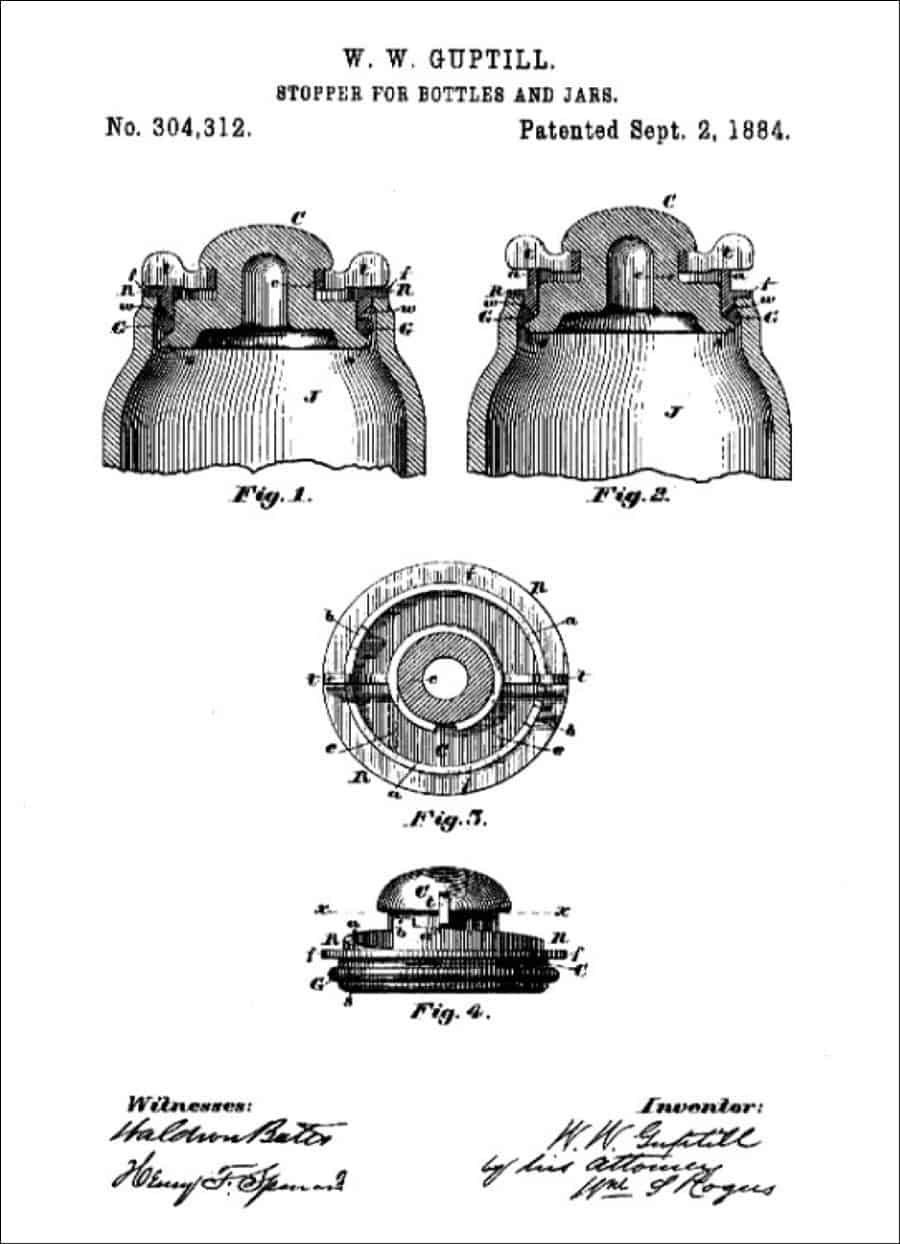
Winslow W. Guptil of Boston, Massachusetts, was issued Patent No. 304,312 on September 2, 1884, and assigned it to the Lafayette Jar & Stopper Co., Jersey City, New Jersey. The firm was a jobber instead of a manufacturer.
There were at least three different molds made for the “bust” variation of the jars and three distinctly different line drawings of the bust. One shows an apparently younger man. It is possible that the “younger” bust variation was made after the other one wore out, or the molds were used simultaneously.
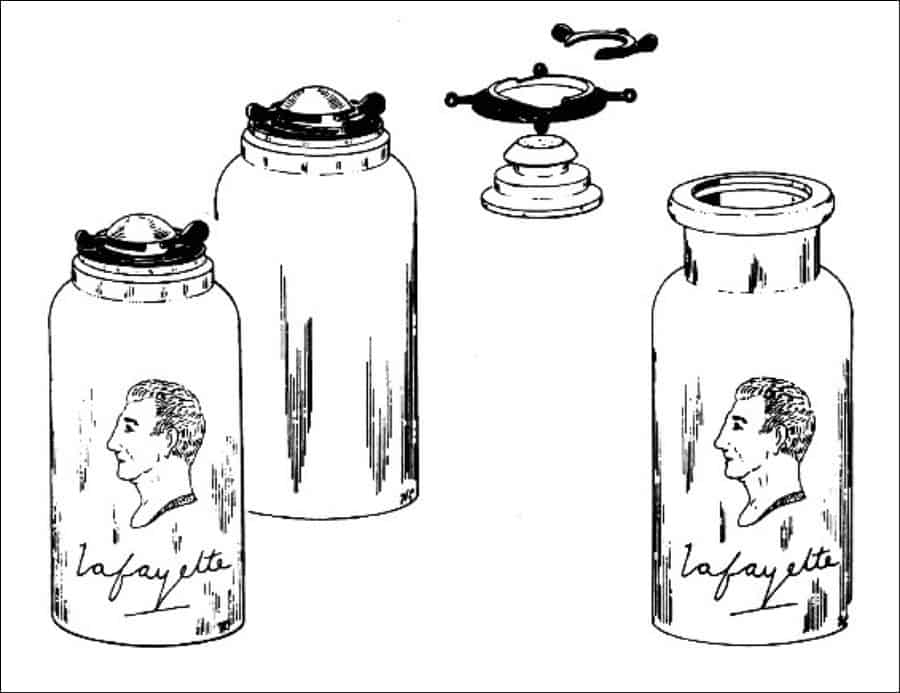
A second patent was issued to James Comley of Philadelphia, Pennsylvania (No. 323,636) on August 4, 1885. These jars had tooled finishes. The Comley improvement had a stud projecting from the back of the thumbpiece ring. The stud was meant to keep the ring pressed tightly against the glass stopper to prevent the closure from accidentally coming apart.
Primary Image: “Lafayette” (Profile of Lafayette) pint aquamarine jar imaged on location by Alan DeMaison, FOHBC Virtual Museum Midwest Studio.
Support Images: Auction Lot 22: “Lafayette” And Bust Historical Fruit Jar, America, 1860-1880. Cylindrical, aquamarine, ground mouth with three piece metal closure – smooth base, pint. L #1450 Fine condition, rare. – Norman Heckler Jr. & Sr., Norman C. Heckler & Company, Auction #171
Support Images: Auction Lot 184: “Lafayette” And Bust Fruit Jar, America, 1860-1880. Cylindrical, aquamarine, tooled round collared mouth with three piece glass and metal closure – smooth base embossed “5”, quart; (light surface rust on closure parts, jar has scattered light exterior wear marks and light interior stain). L #1450-2 A fine looking jar with a strong mold impression. Rare. – Norman Heckler Jr. & Sr., Norman C. Heckler & Company, Auction #135
Support Images: Auction Lot 80: “Lafayette” And Bust Historical Fruit Jar, America, 1860-1880. Cylindrical, aquamarine, ground mouth with three piece stopper – smooth base, pint; (two shallow chips to the ground mouth). L #1450 Good bright example with strong embossing, chipping to the top of the ground mouth is minor. – Norman Heckler Jr. & Sr., Norman C. Heckler & Company, Auction #103Support: Reference to Other “L” Marks by Bill Lockhart, Carol Serr, Beau Schriever, and Bill Lindsey
Support Images: Auction Lot 140: “Lafayette” Fruit Jar, America, 1860-1880. Cylindrical, aquamarine, tooled round collared mouth with glass and metal closure – smooth base, quart; (minor loss to edges of label, surface wear on metal closure). L #1452 Stopper is embossed “Patented / Sept.2.1884 / Aug.4.1885”. Colorful label reads “Plain / Pickles / Westchester / Pickle Works / New York”. Fine condition. – Norman Heckler Jr. & Sr., Norman C. Heckler & Company, Auction #171
Support: Reference to Other “L” Marks by Bill Lockhart, Carol Serr, Beau Schriever, and Bill Lindsey
Support: Reference to Fruit Jar Annual 2020 – The Guide to Collecting Fruit Jars by Jerome J. McCann
Support: Reference to Red Book No. 12, the Collector’s Guide to Old Fruit Jars by Douglas M. Leybourne, Jr. Creswick illustration courtesy Doug Leybourne.
Join the FOHBC: The Virtual Museum is a project of the Federation of Historical Bottle Collectors (FOHBC). To become a member.

